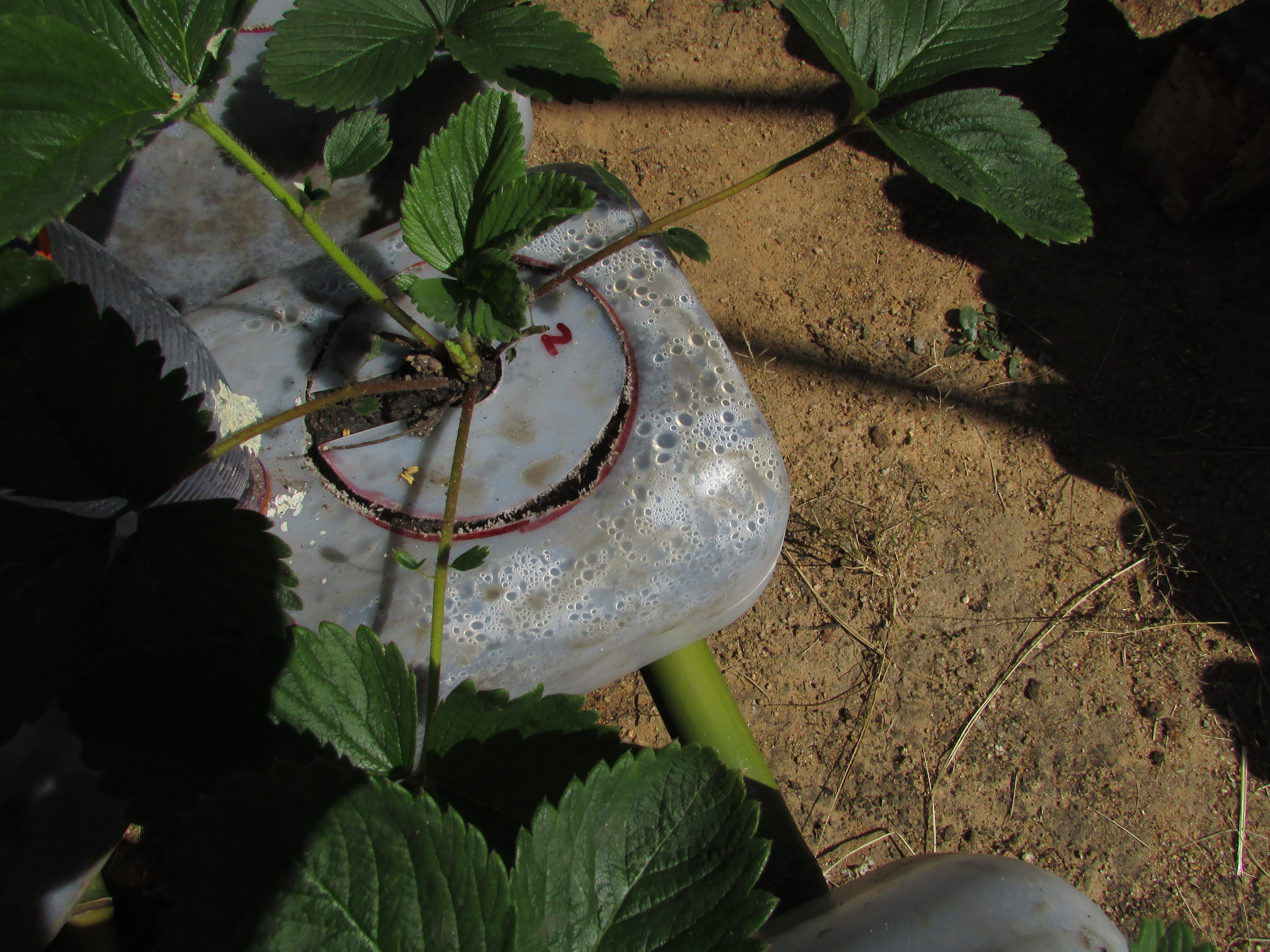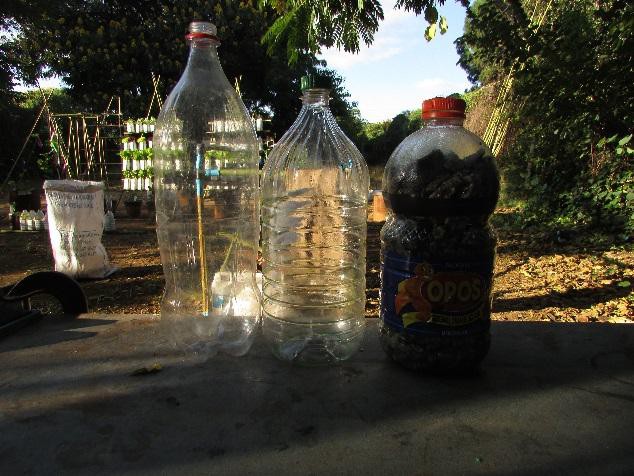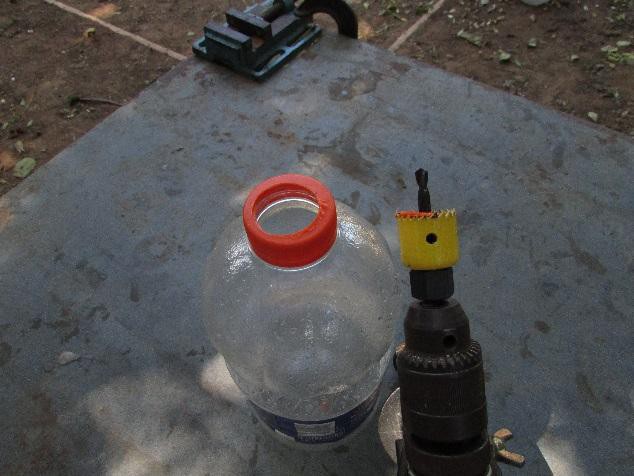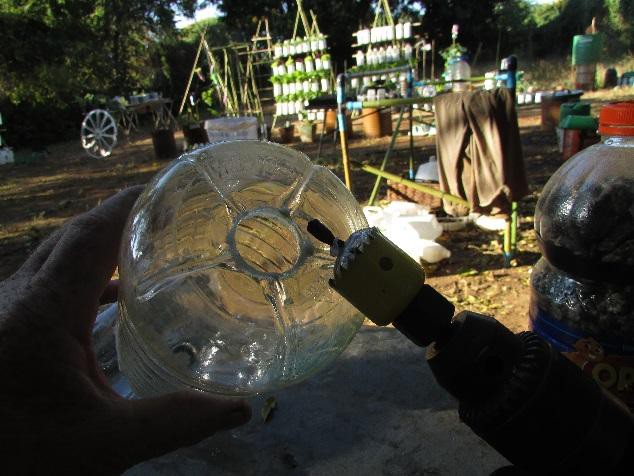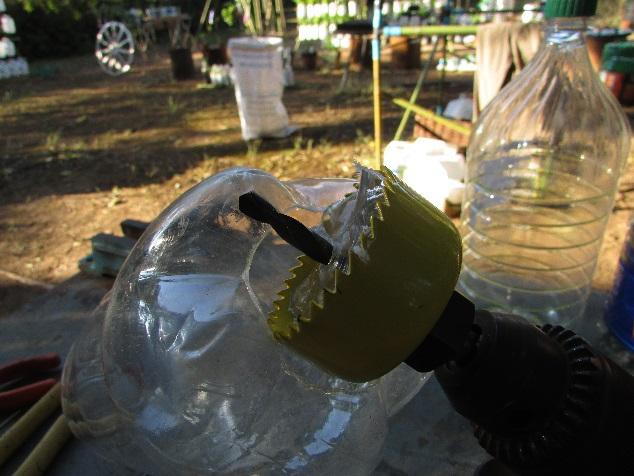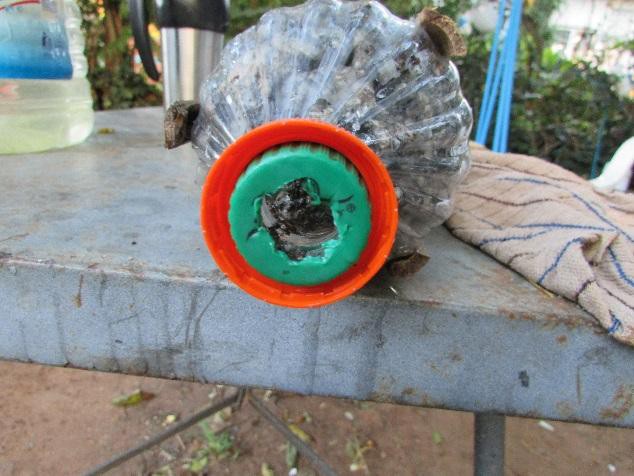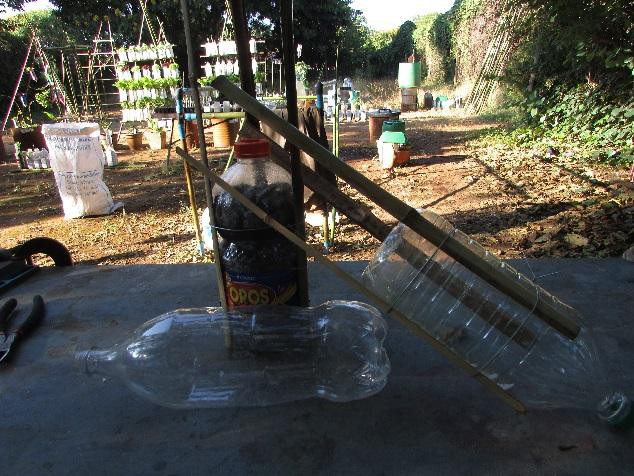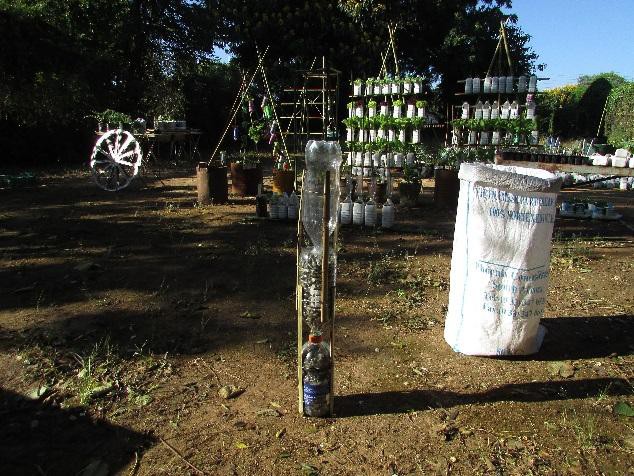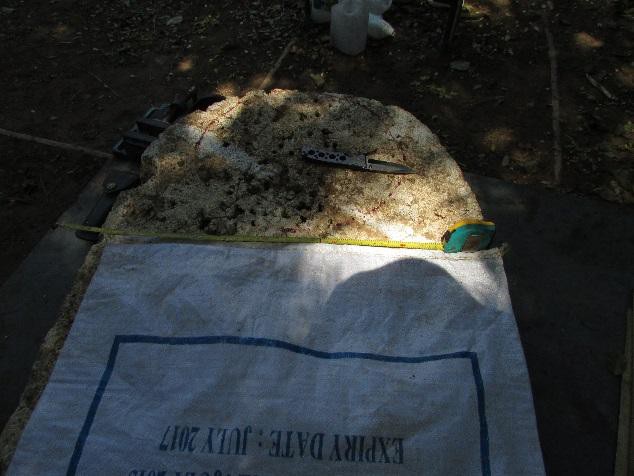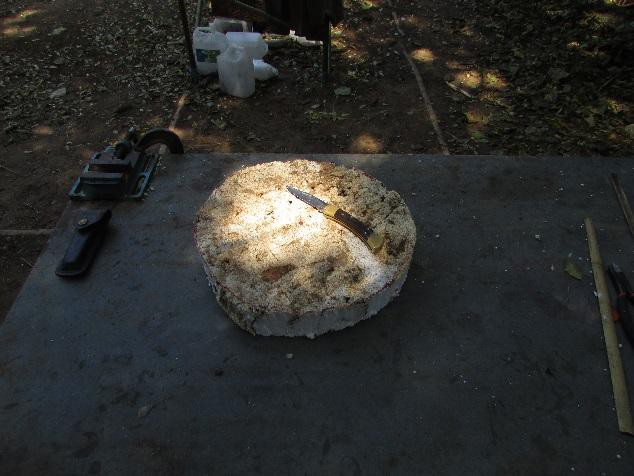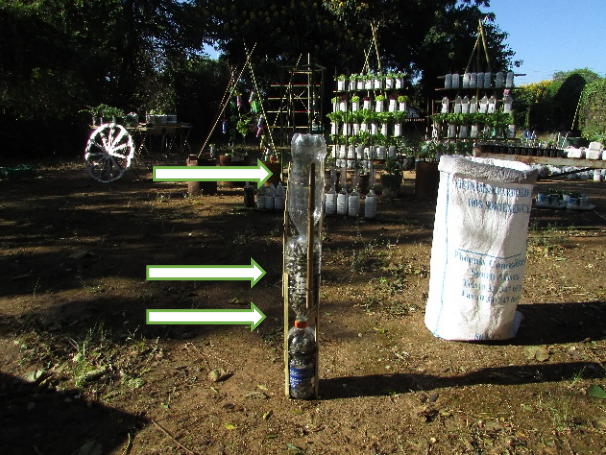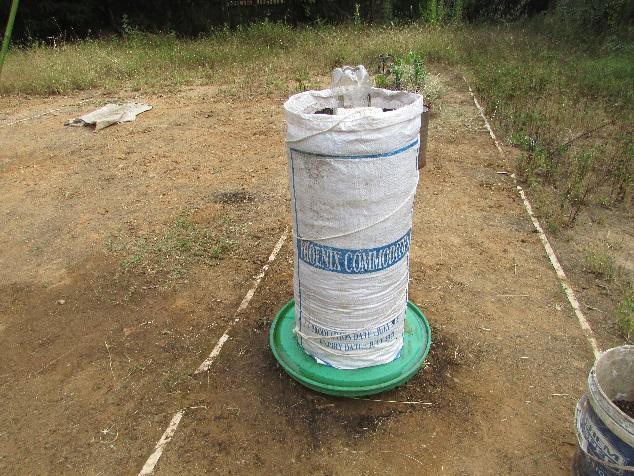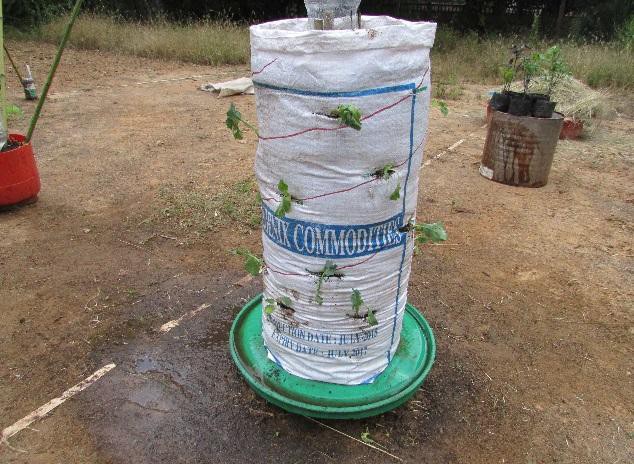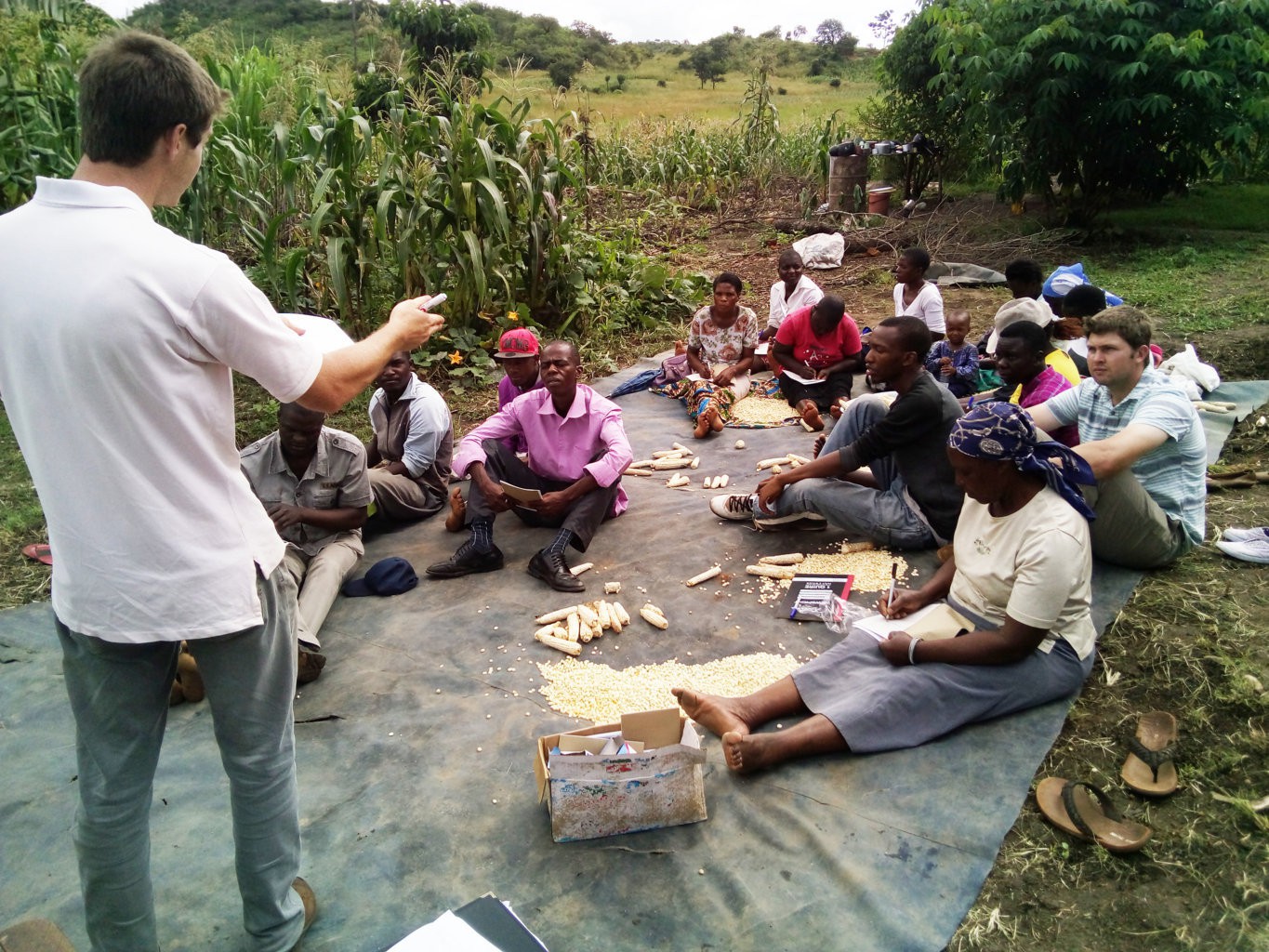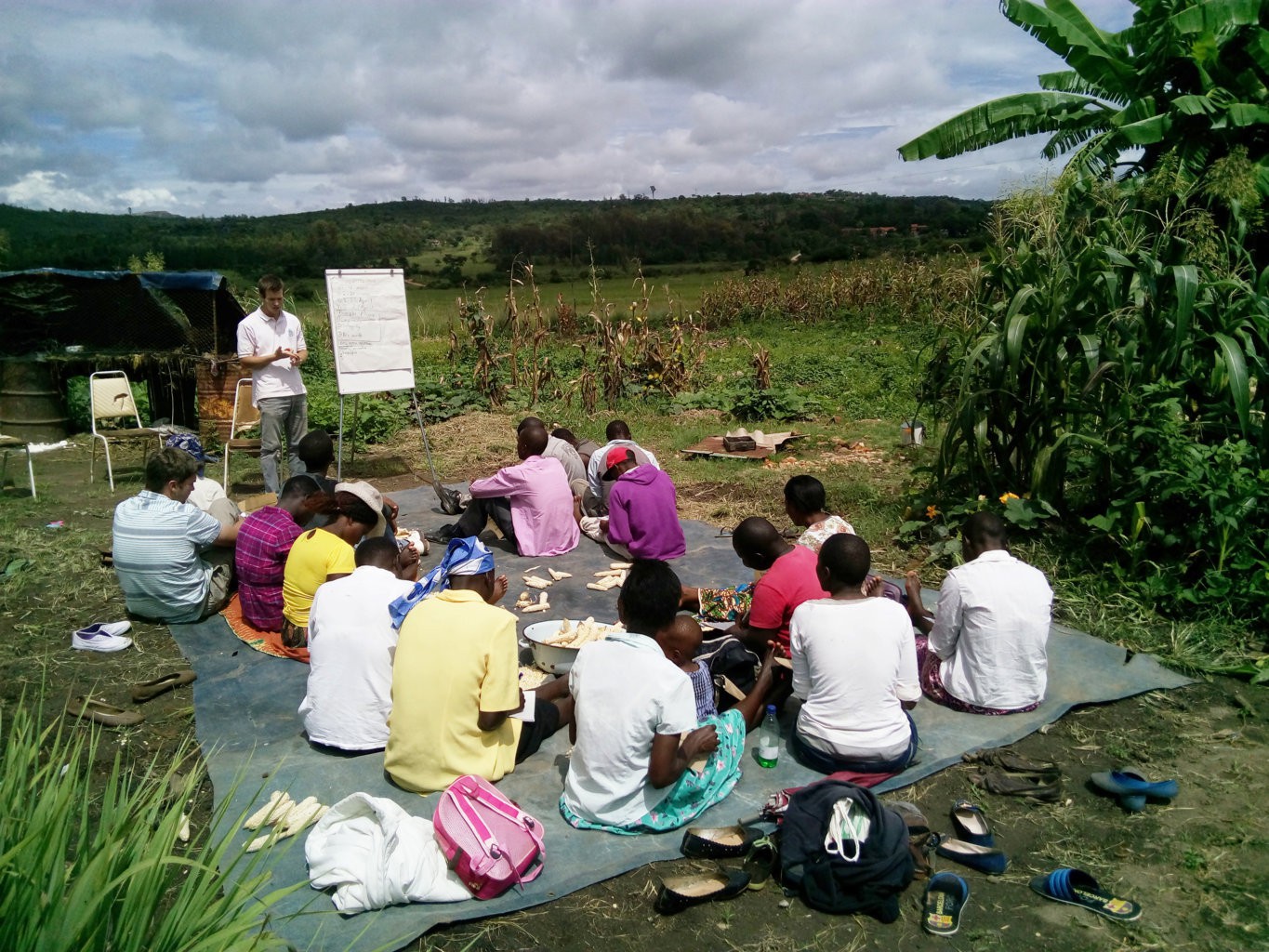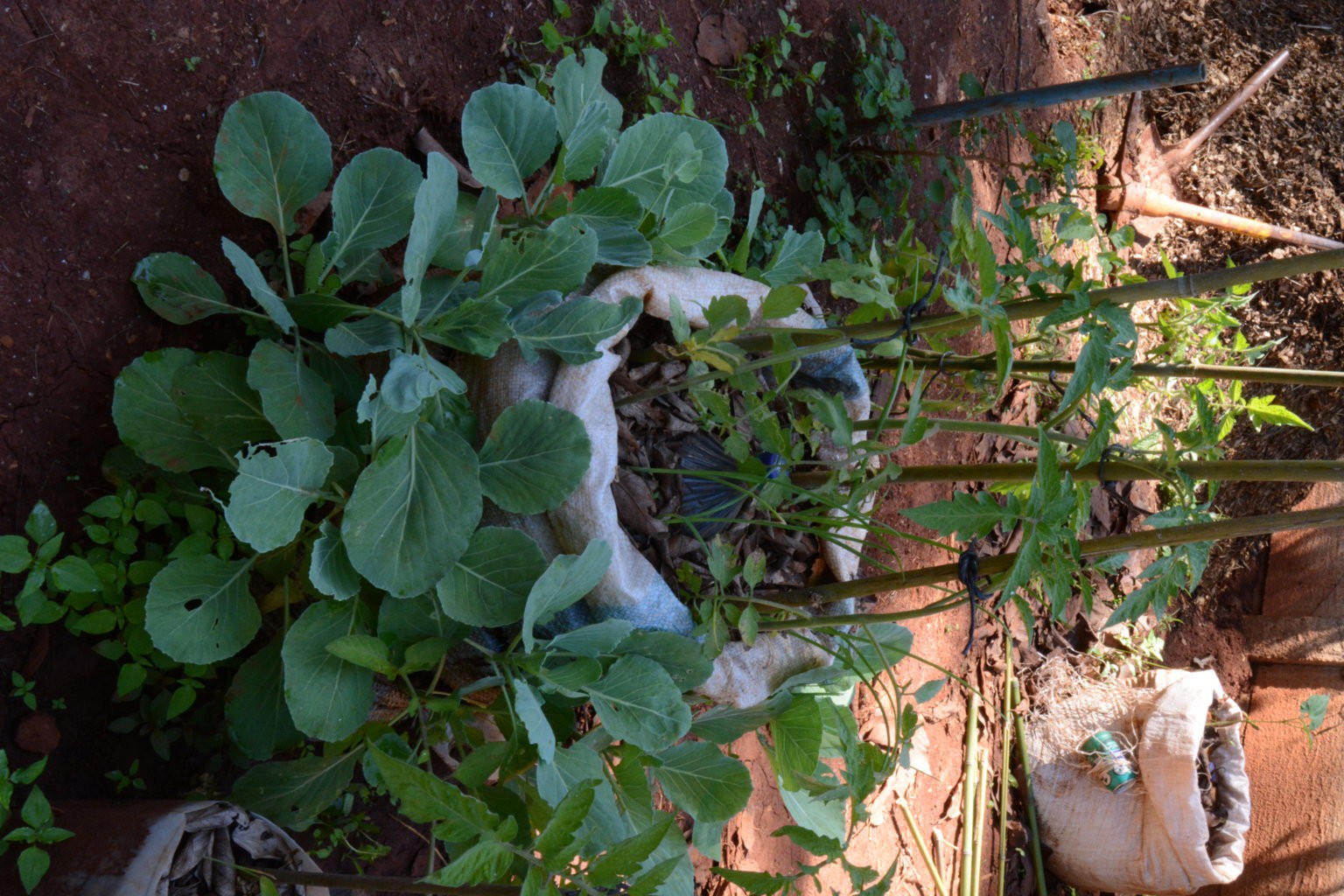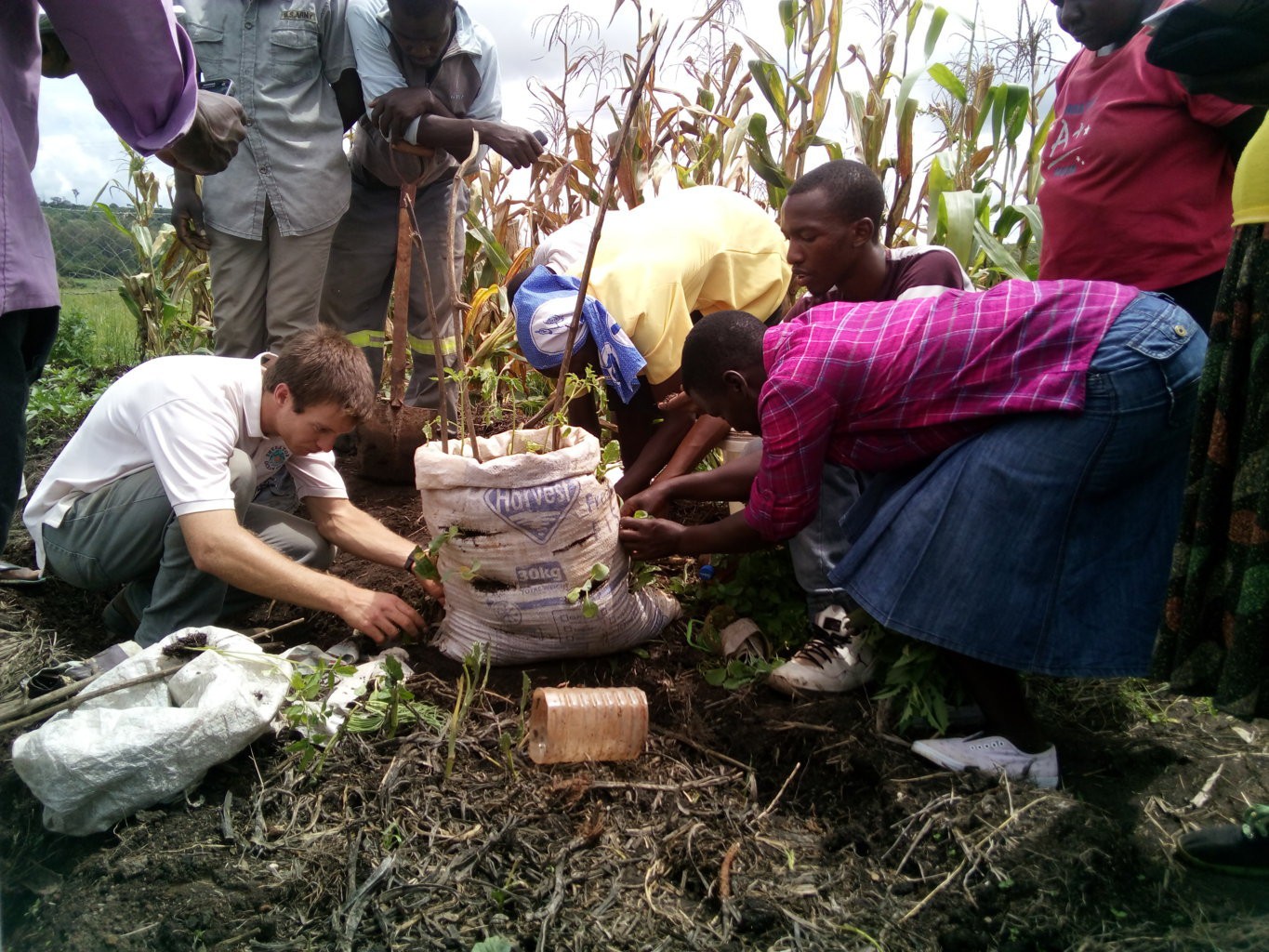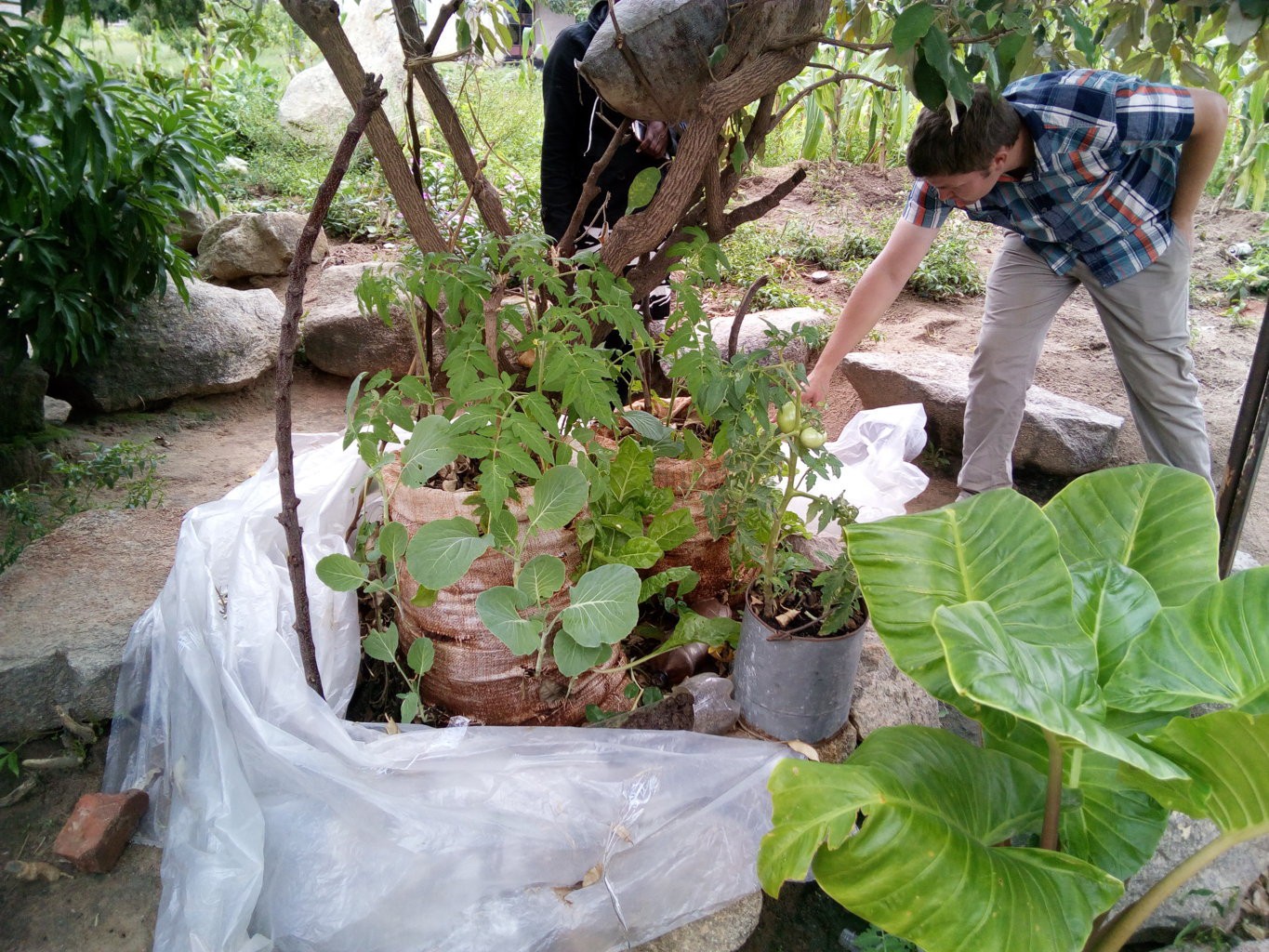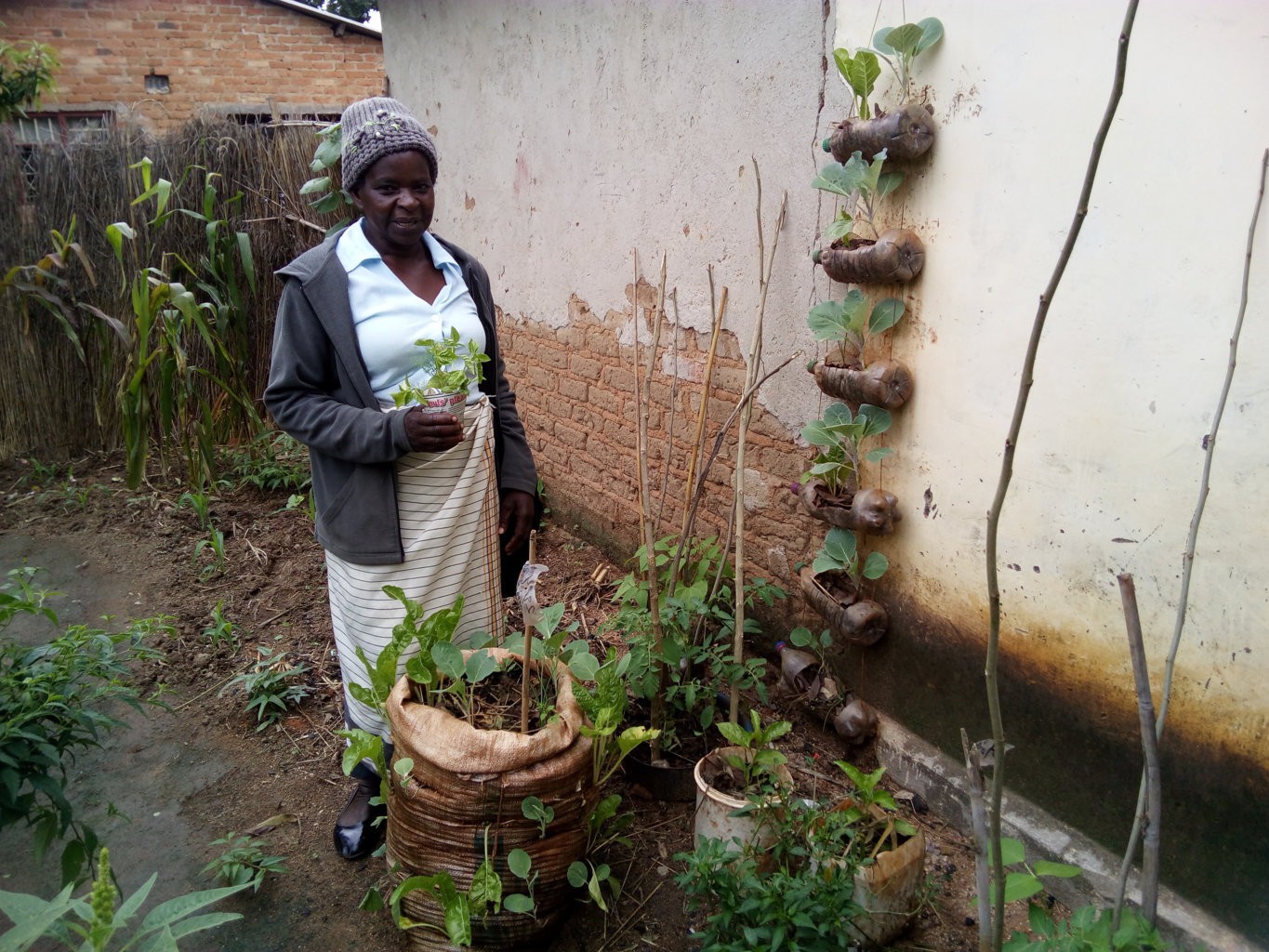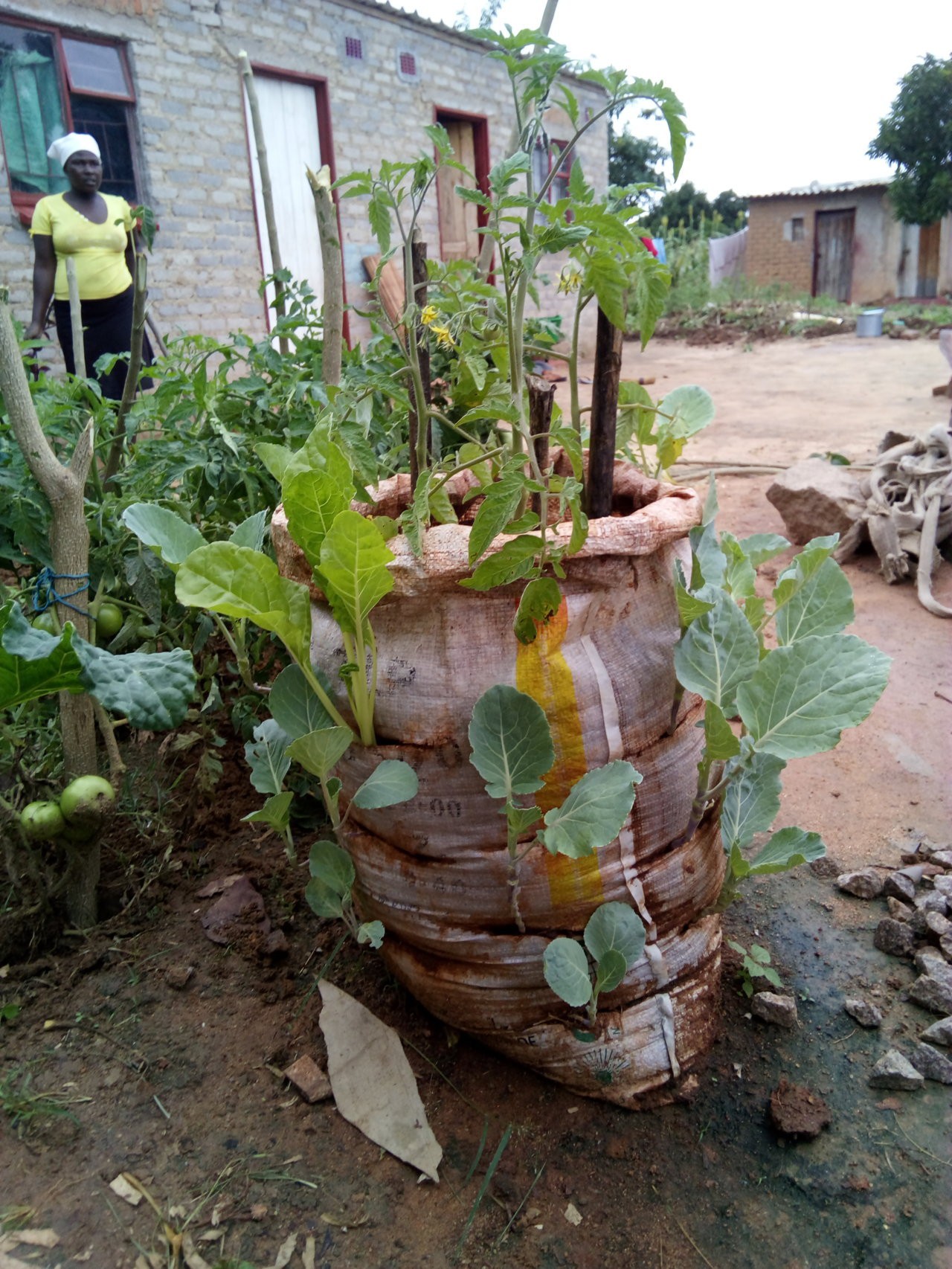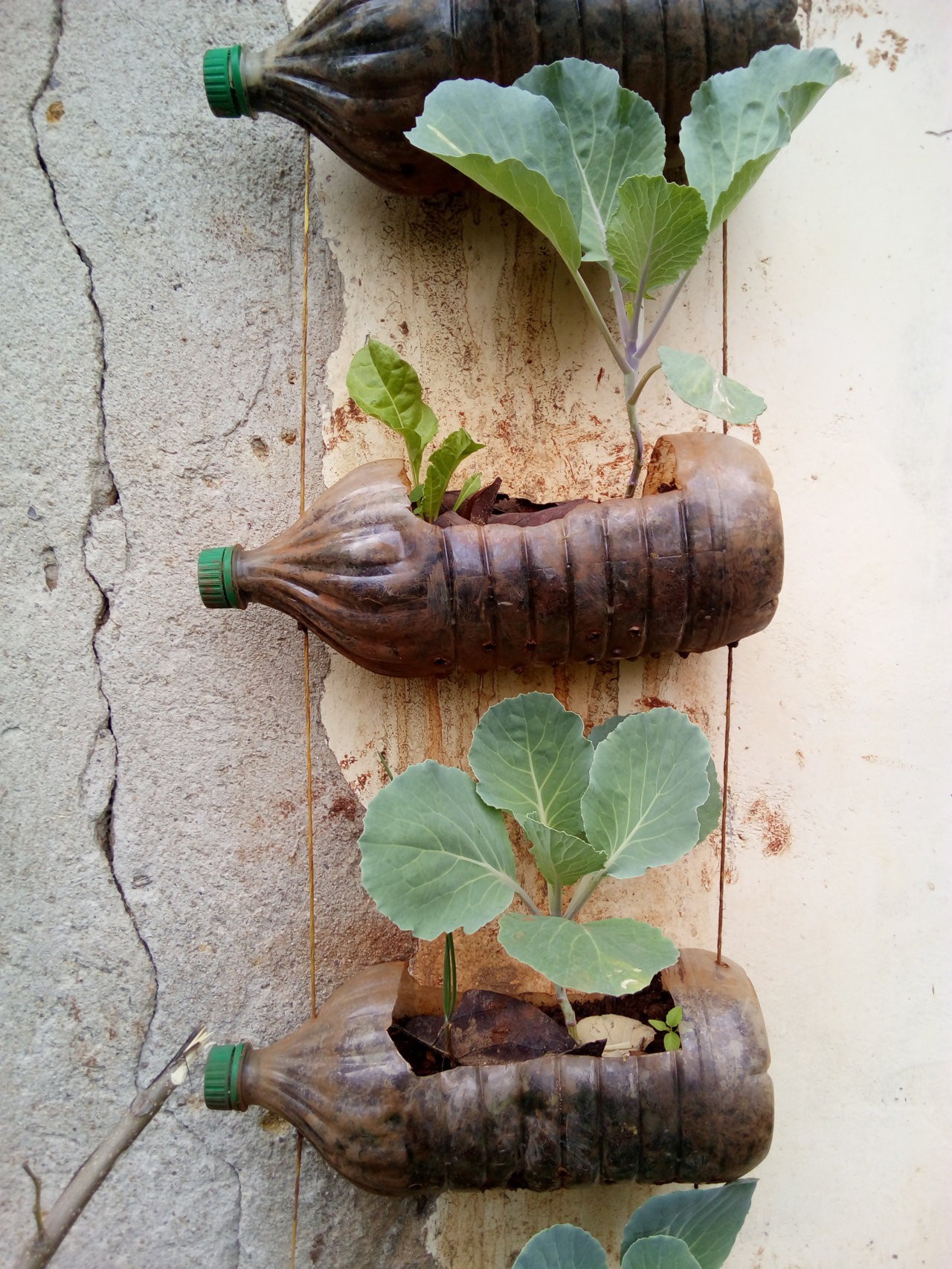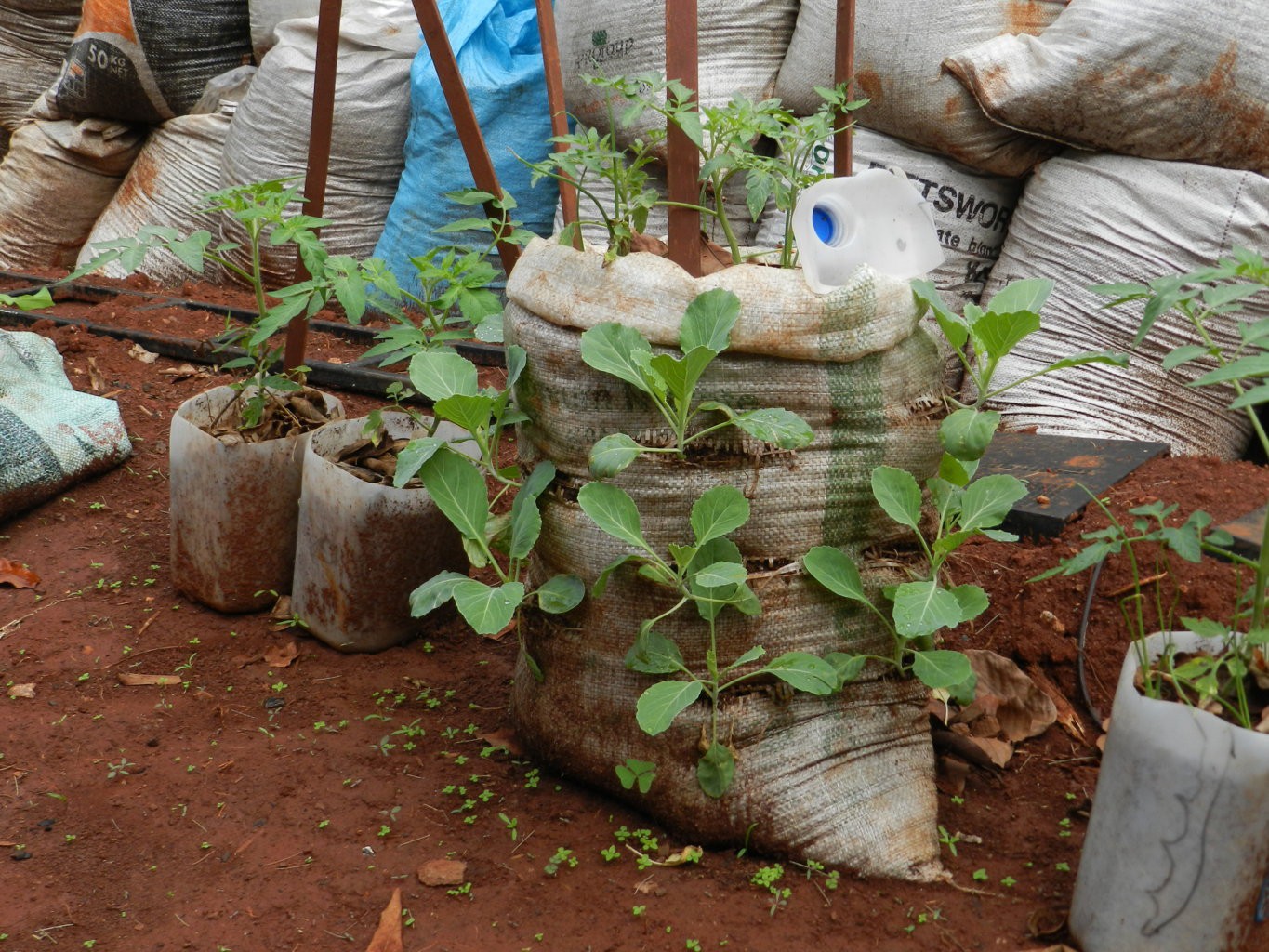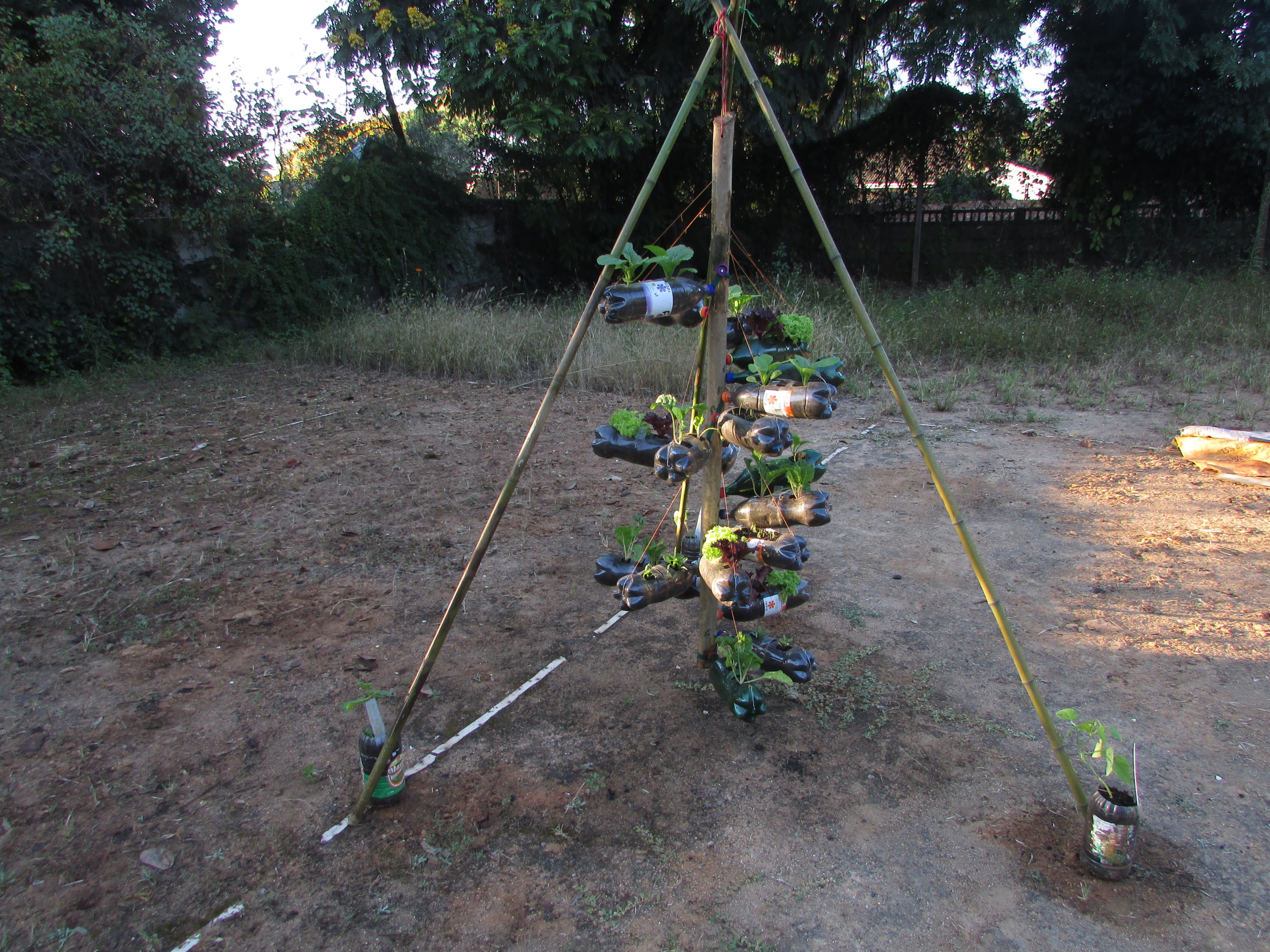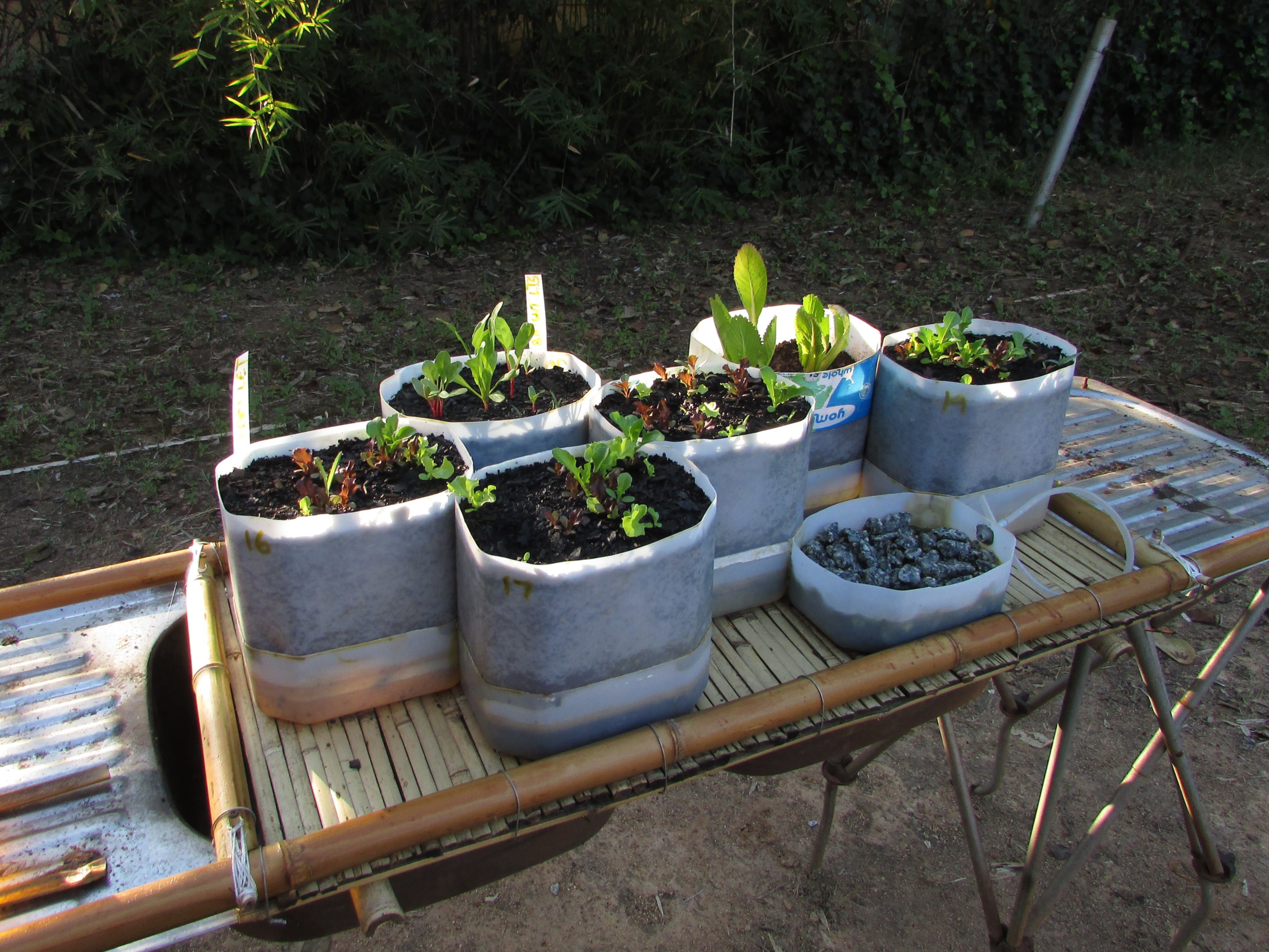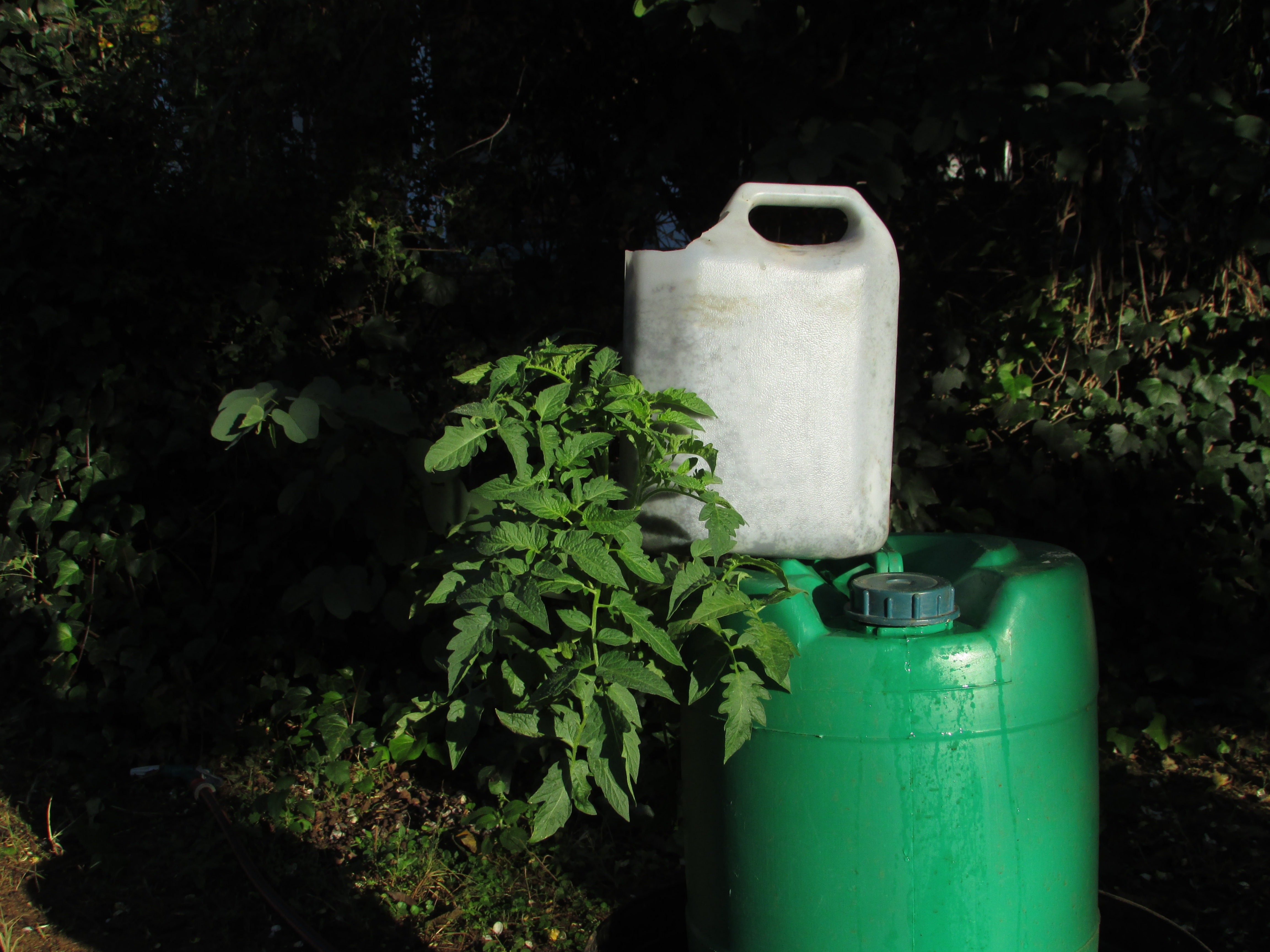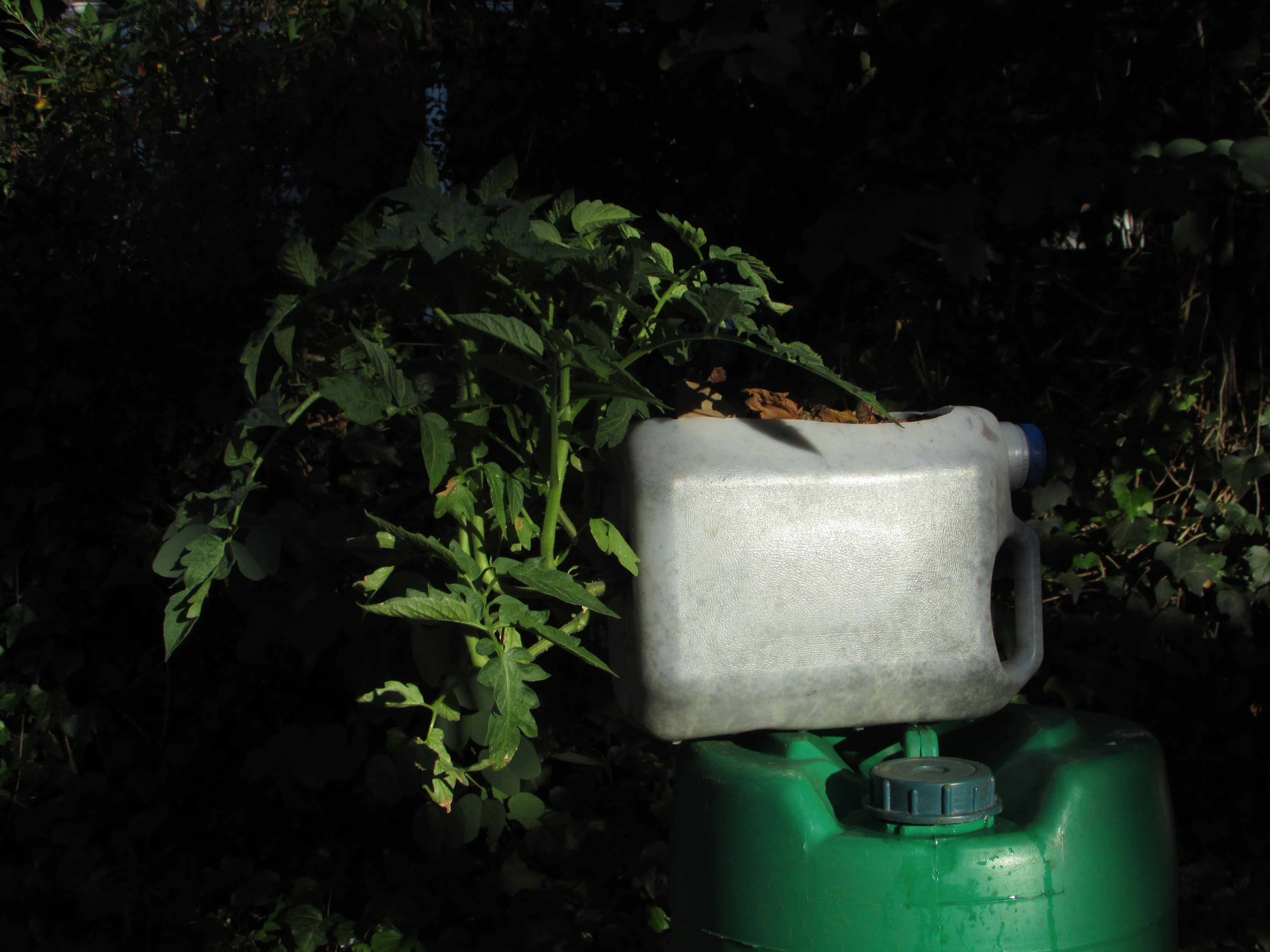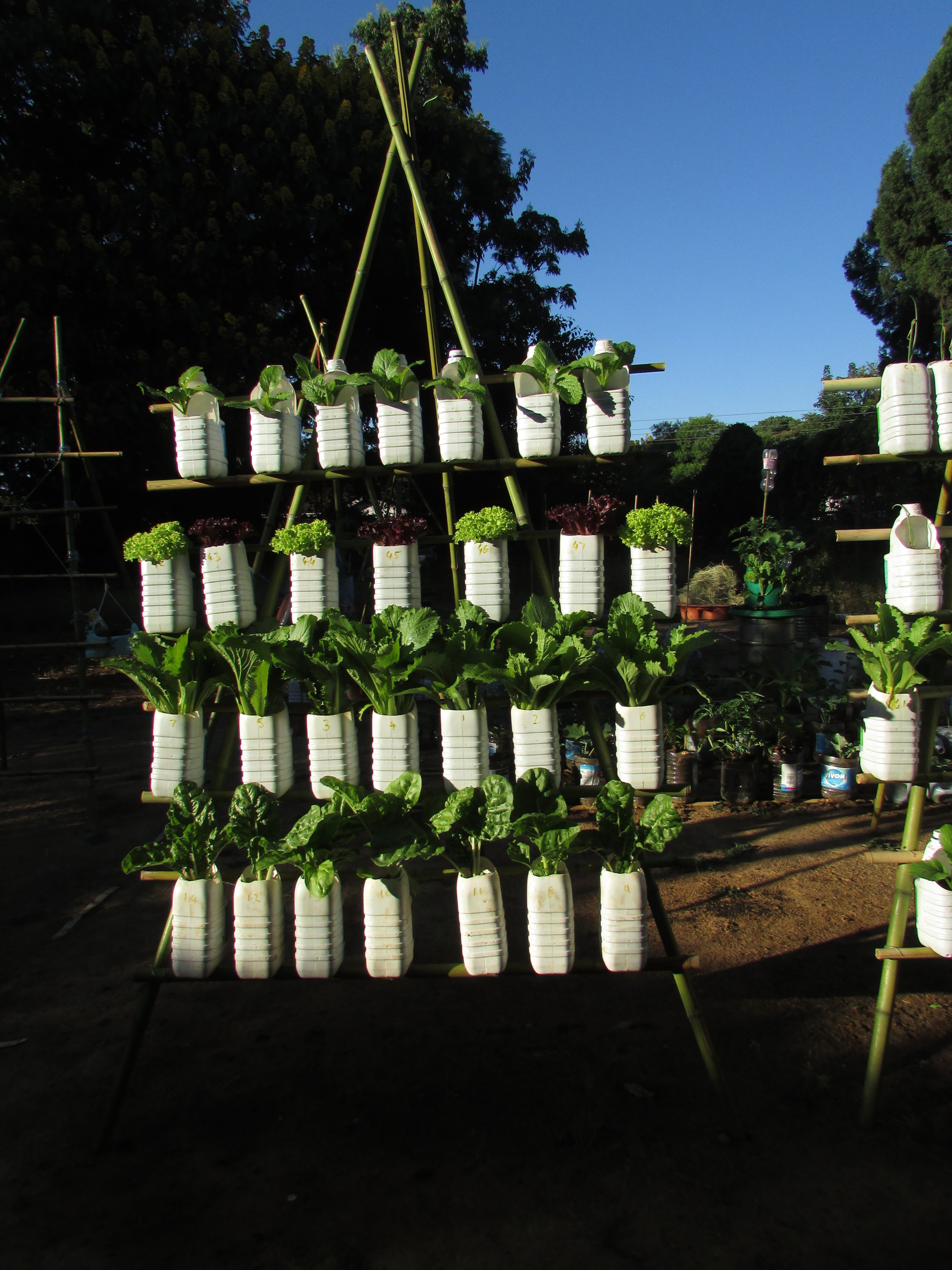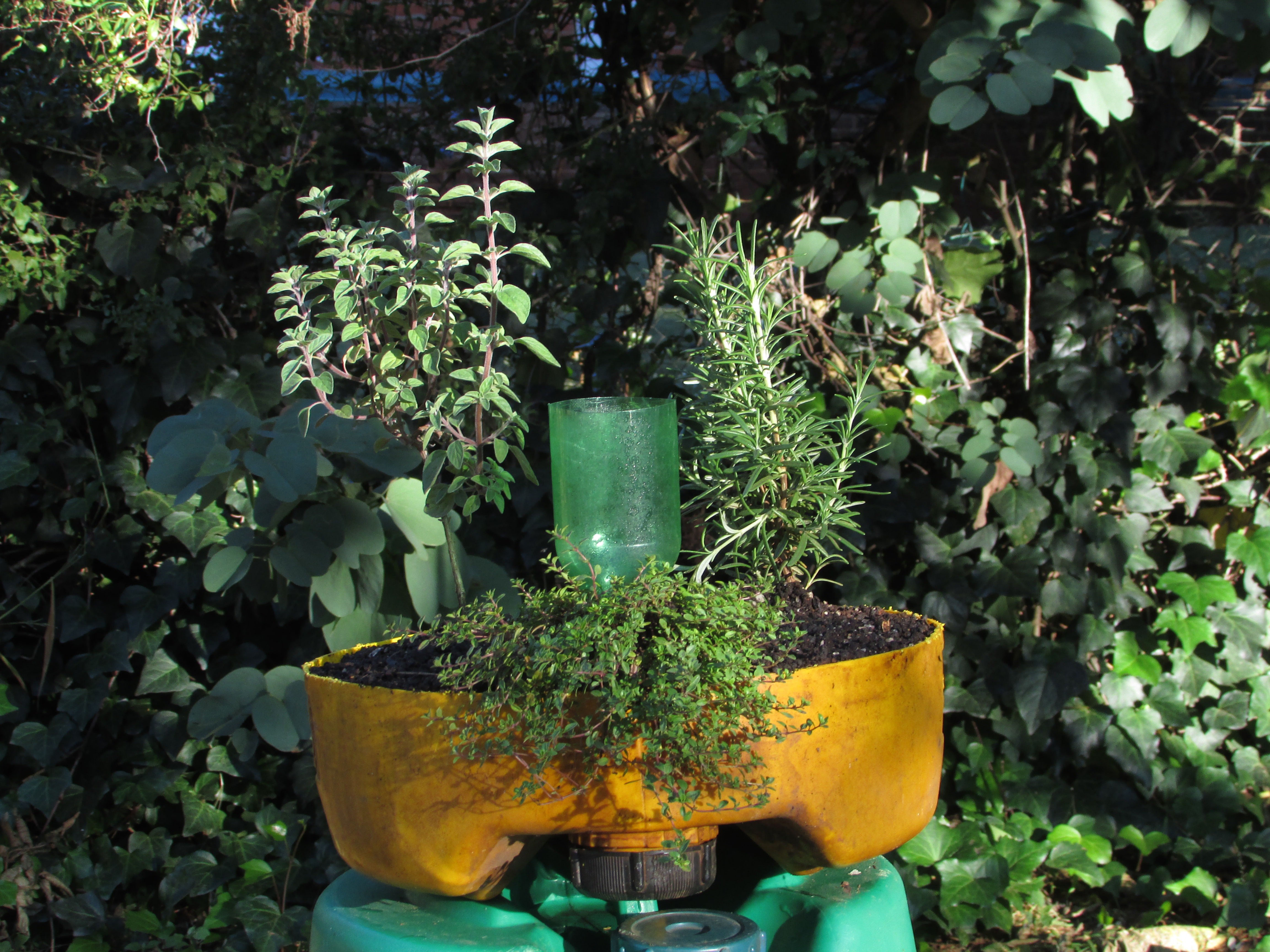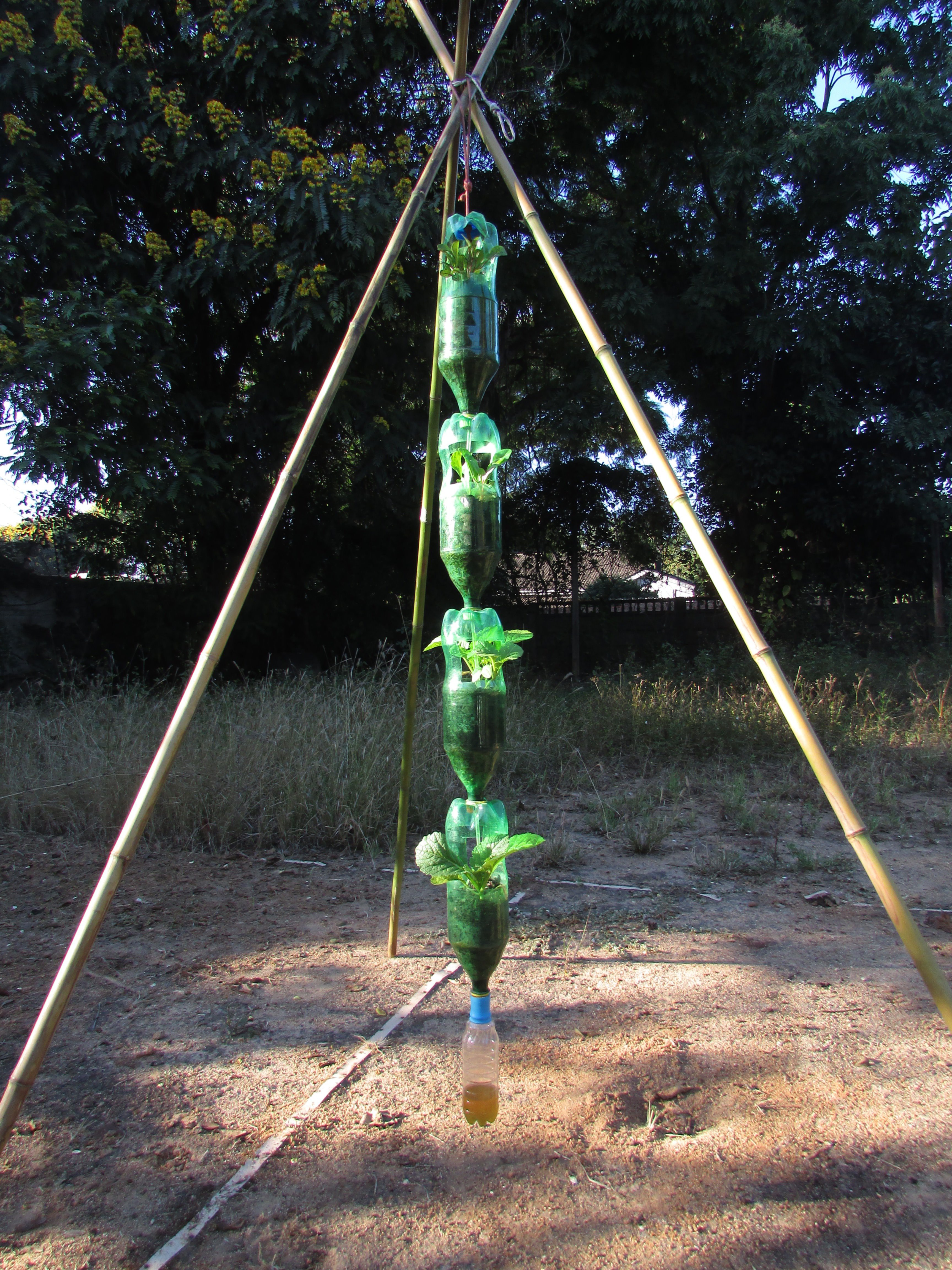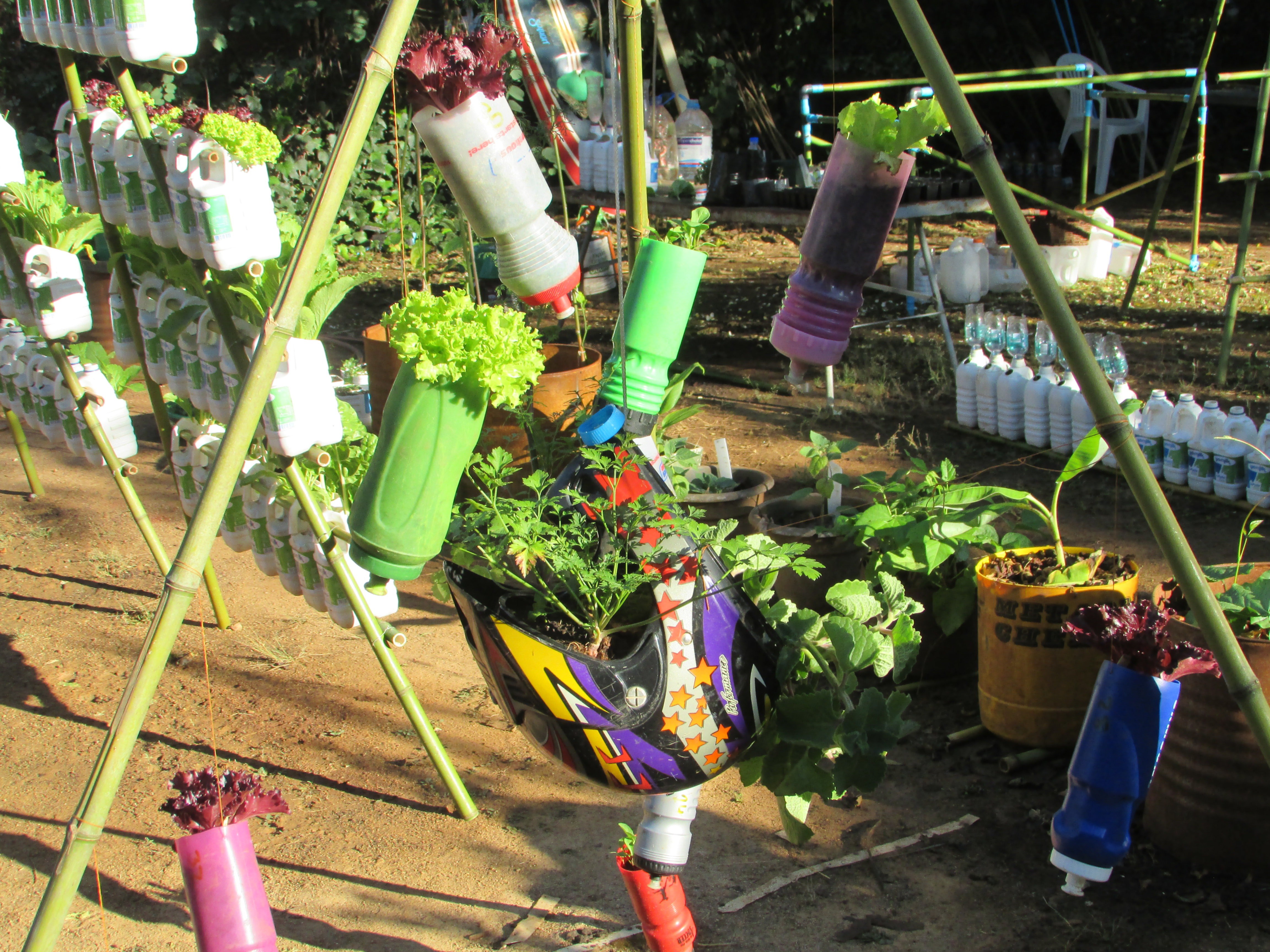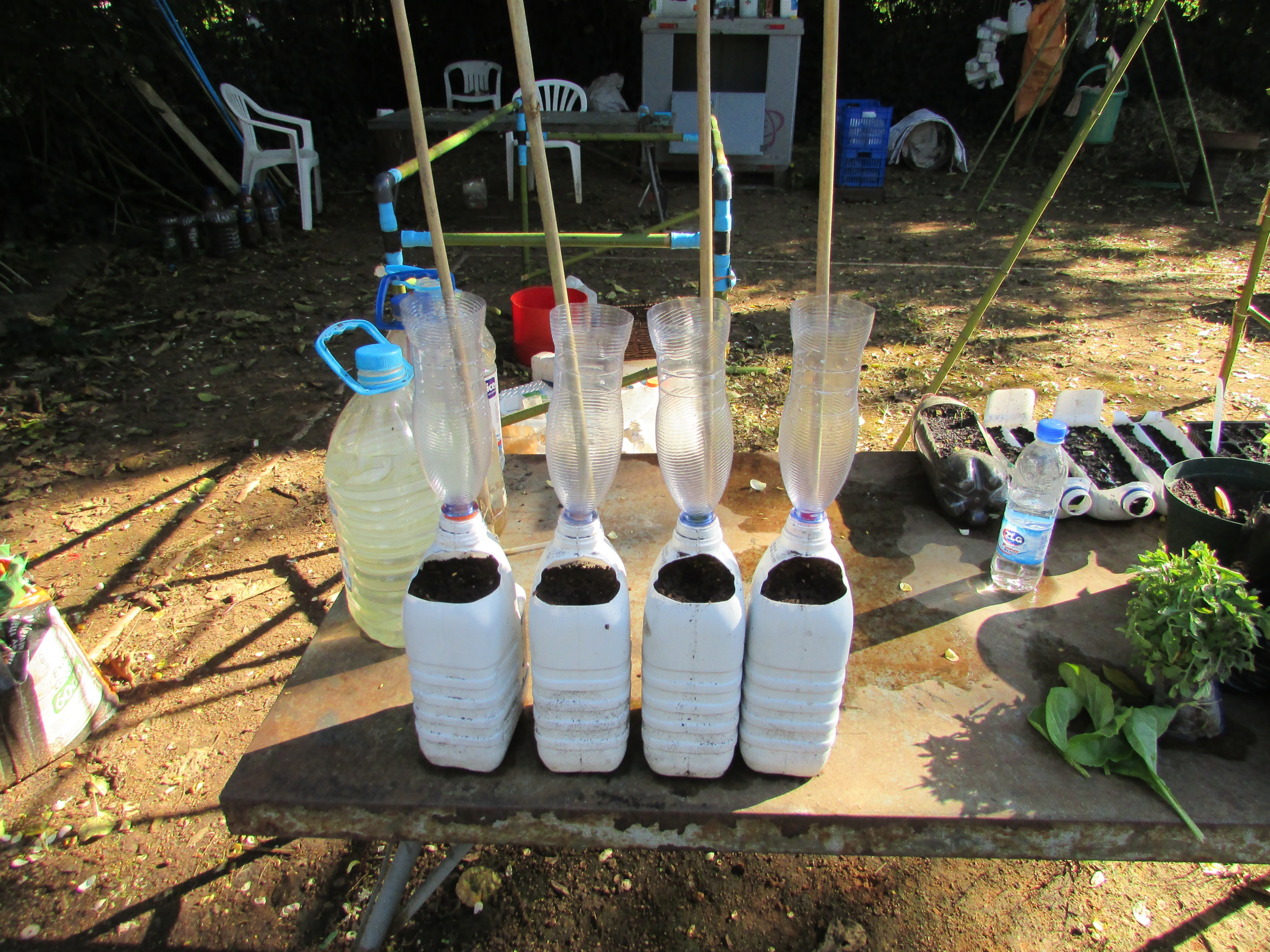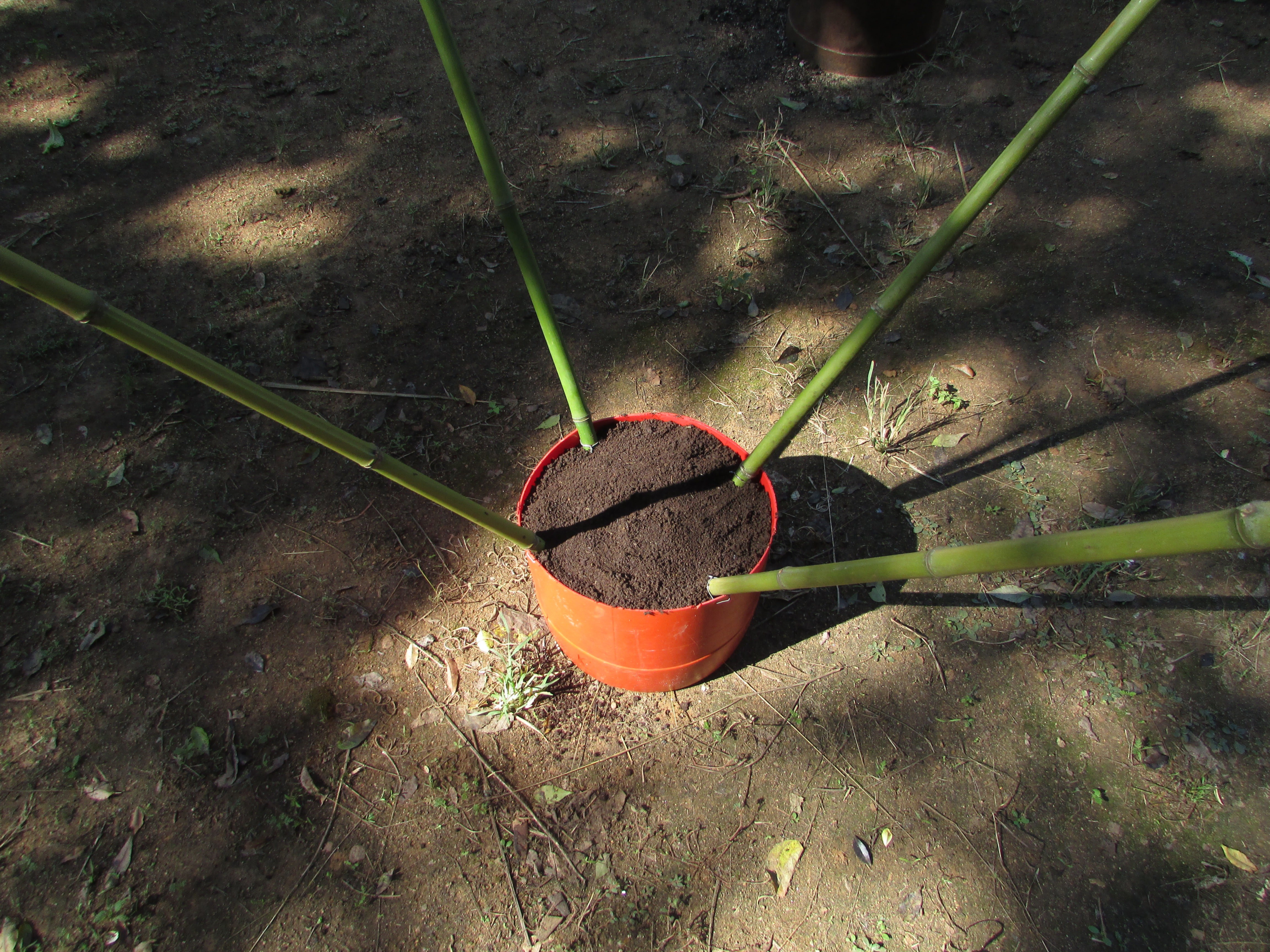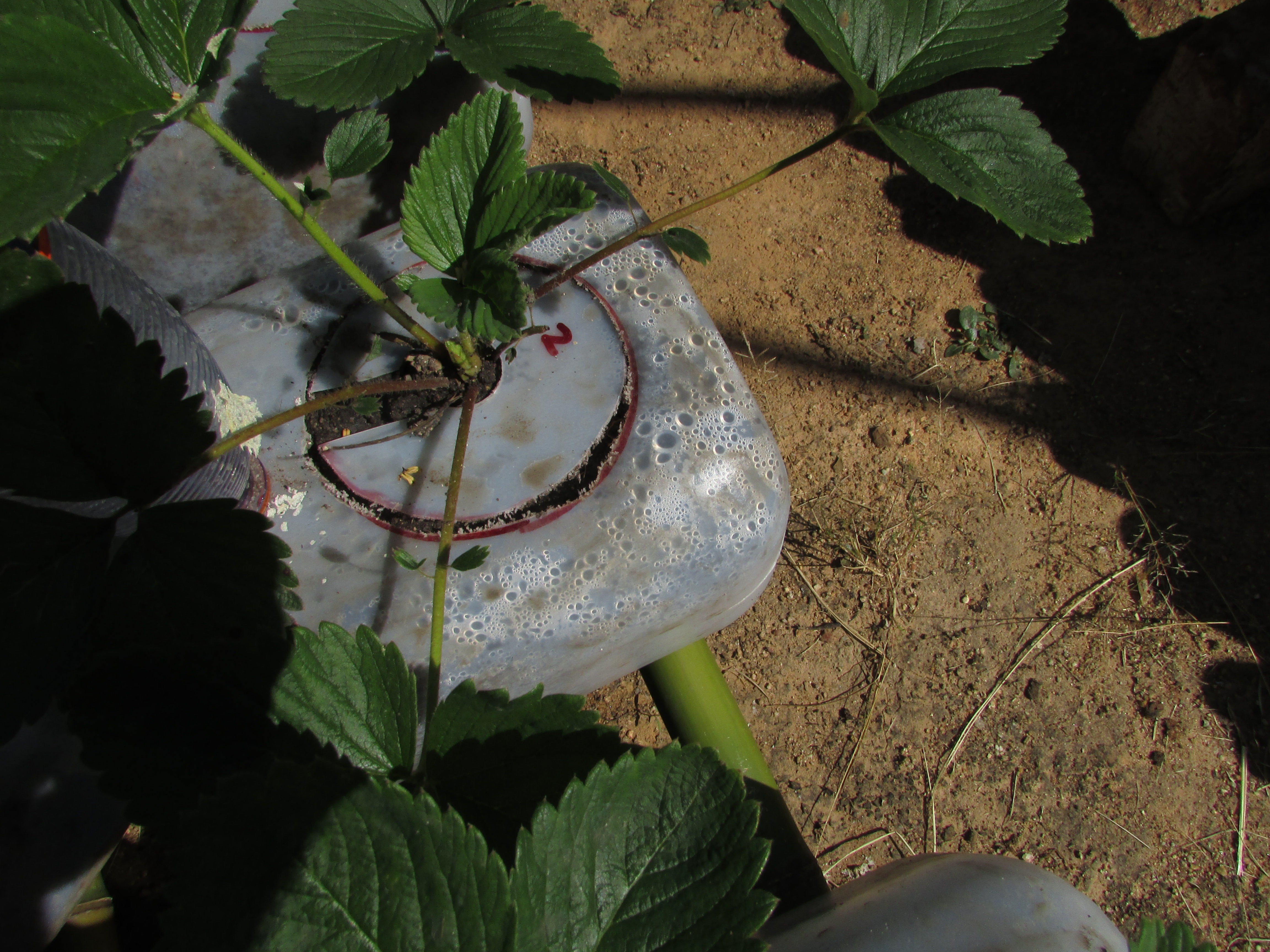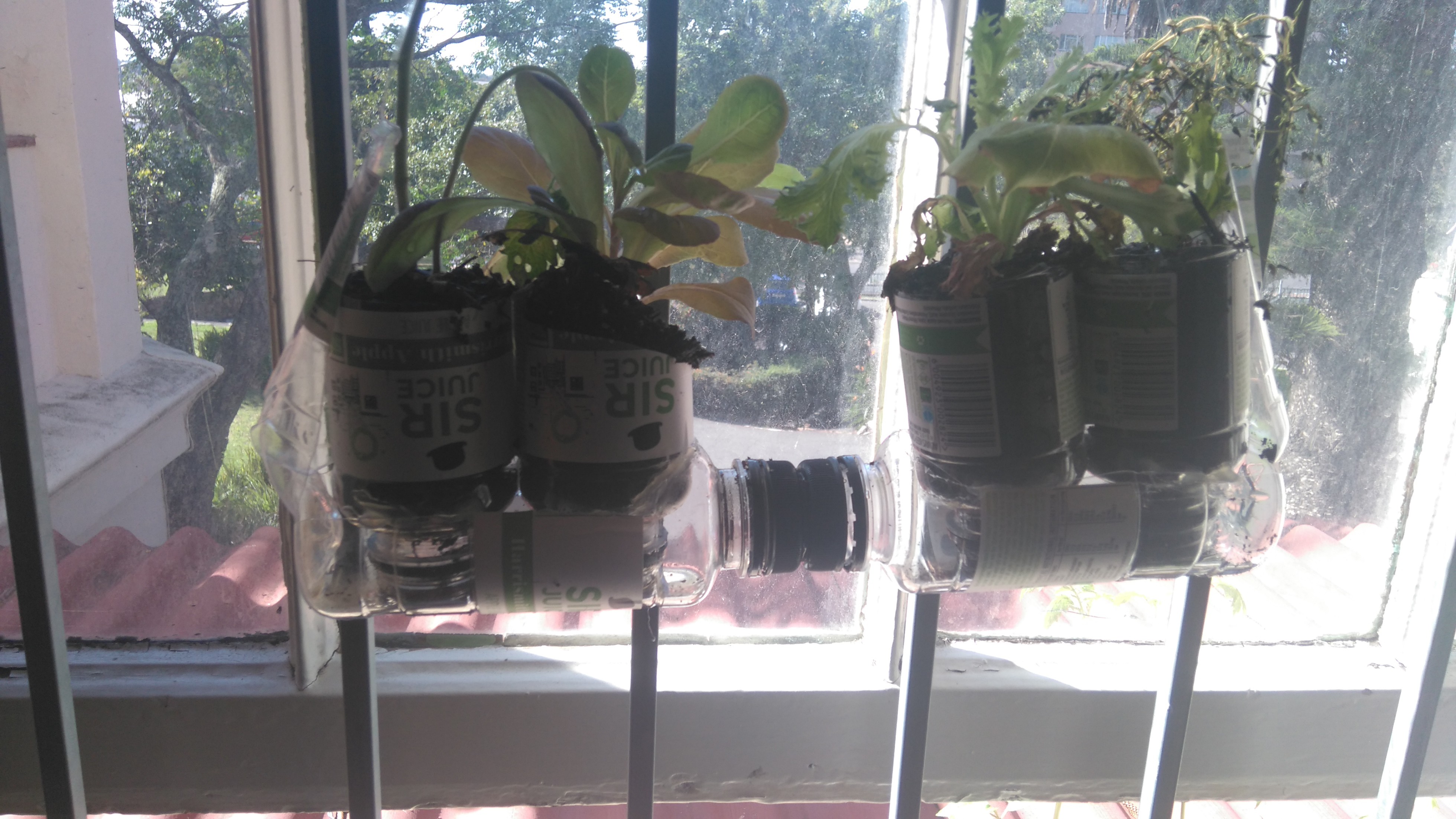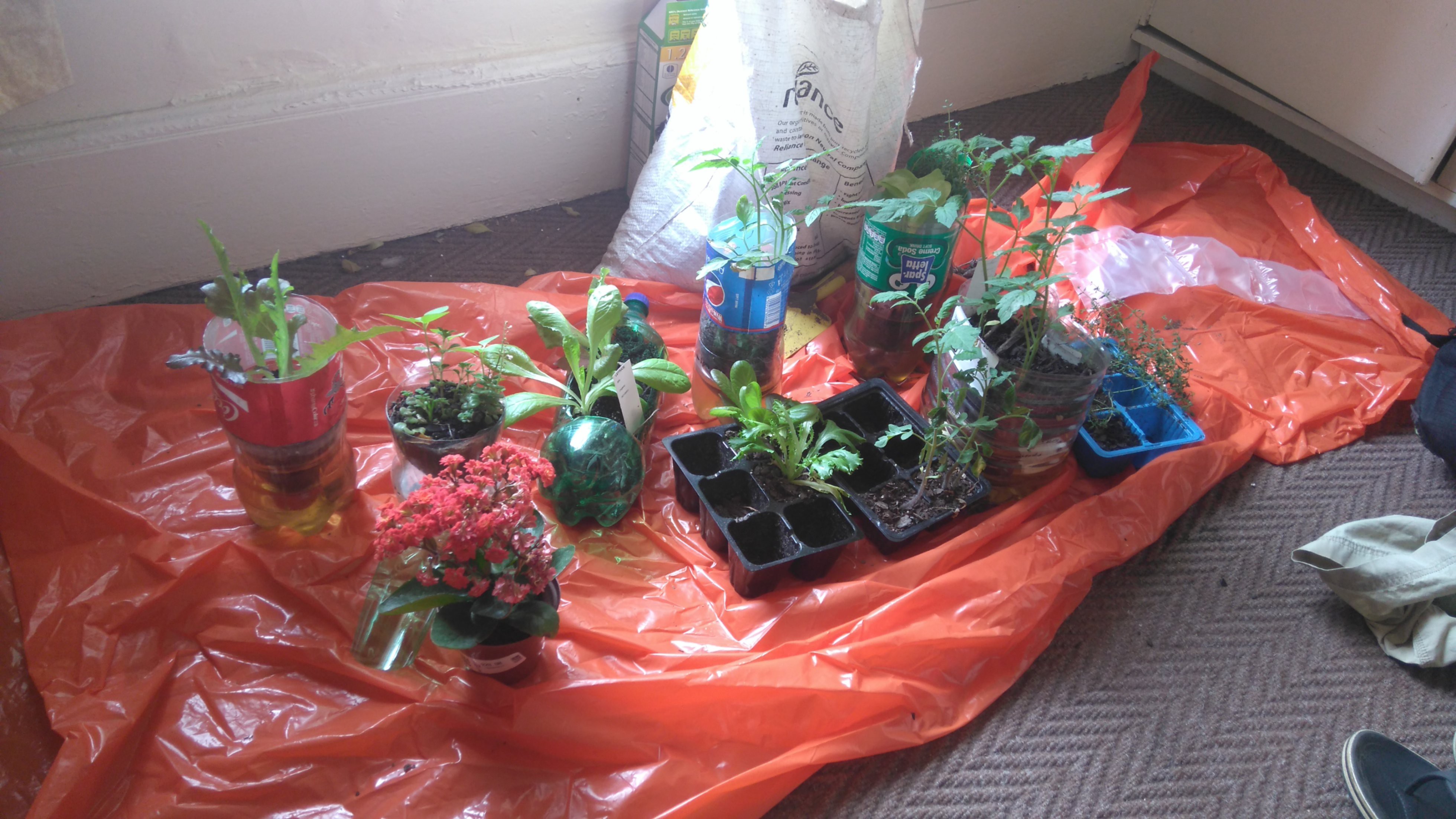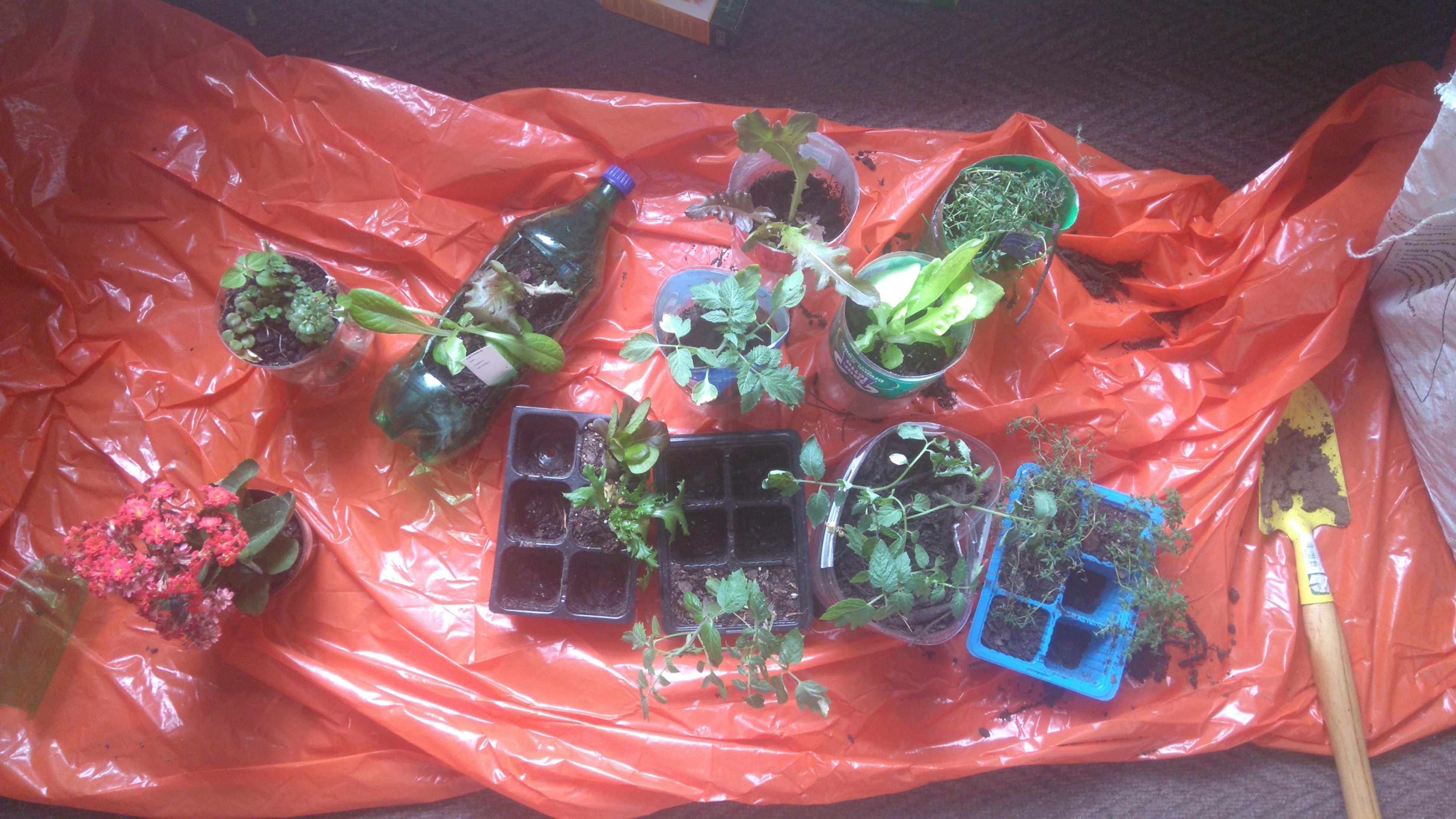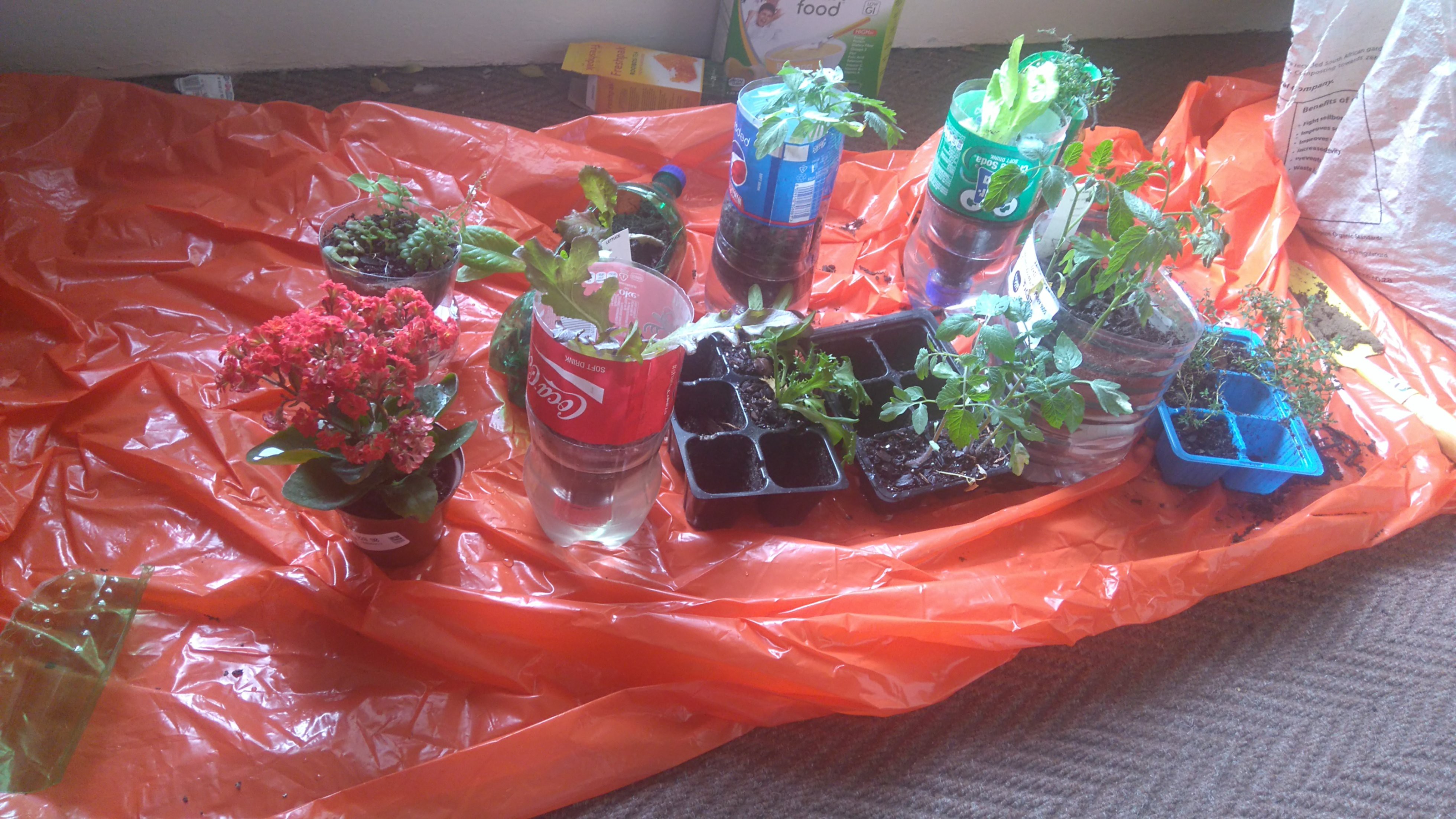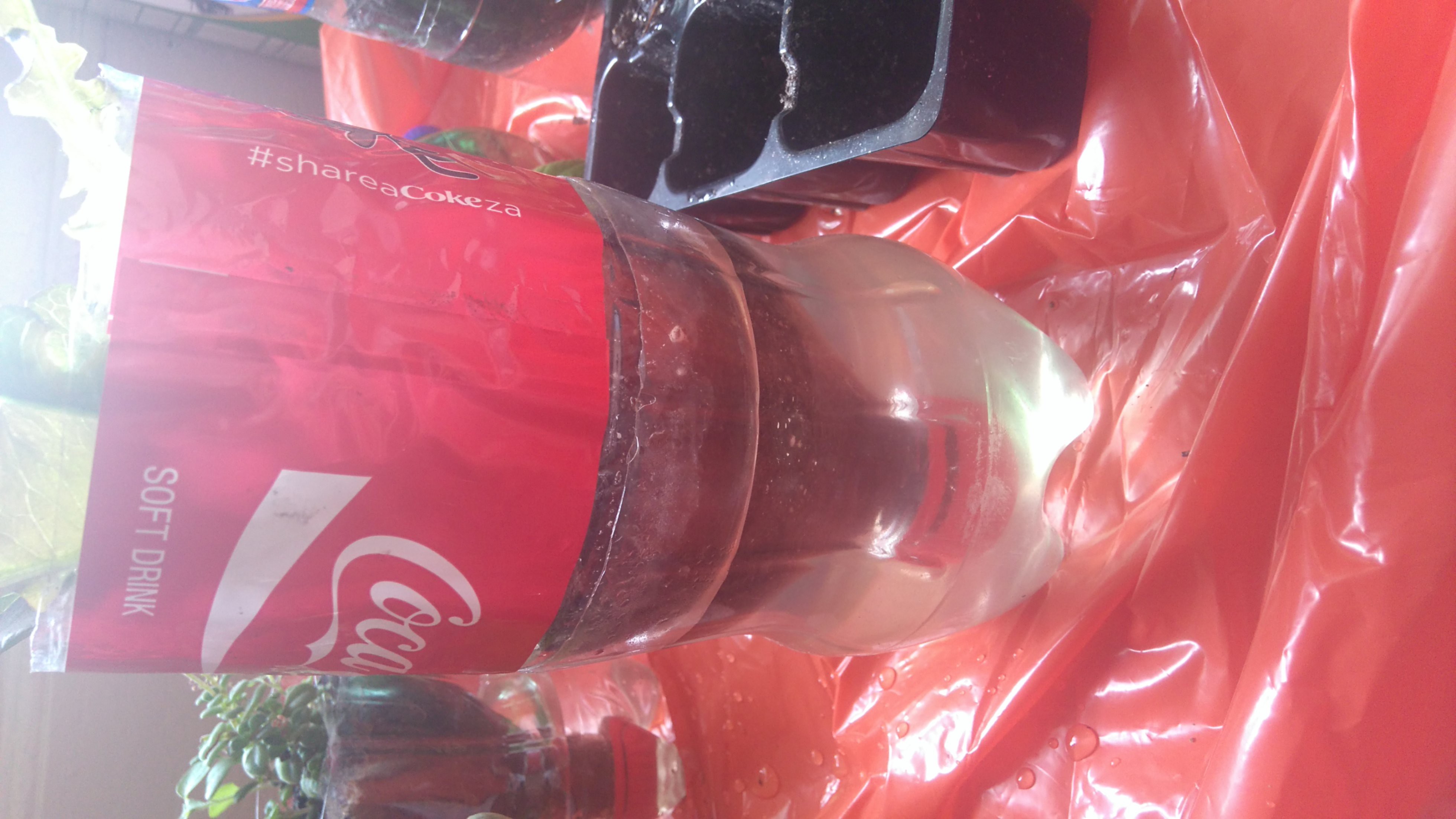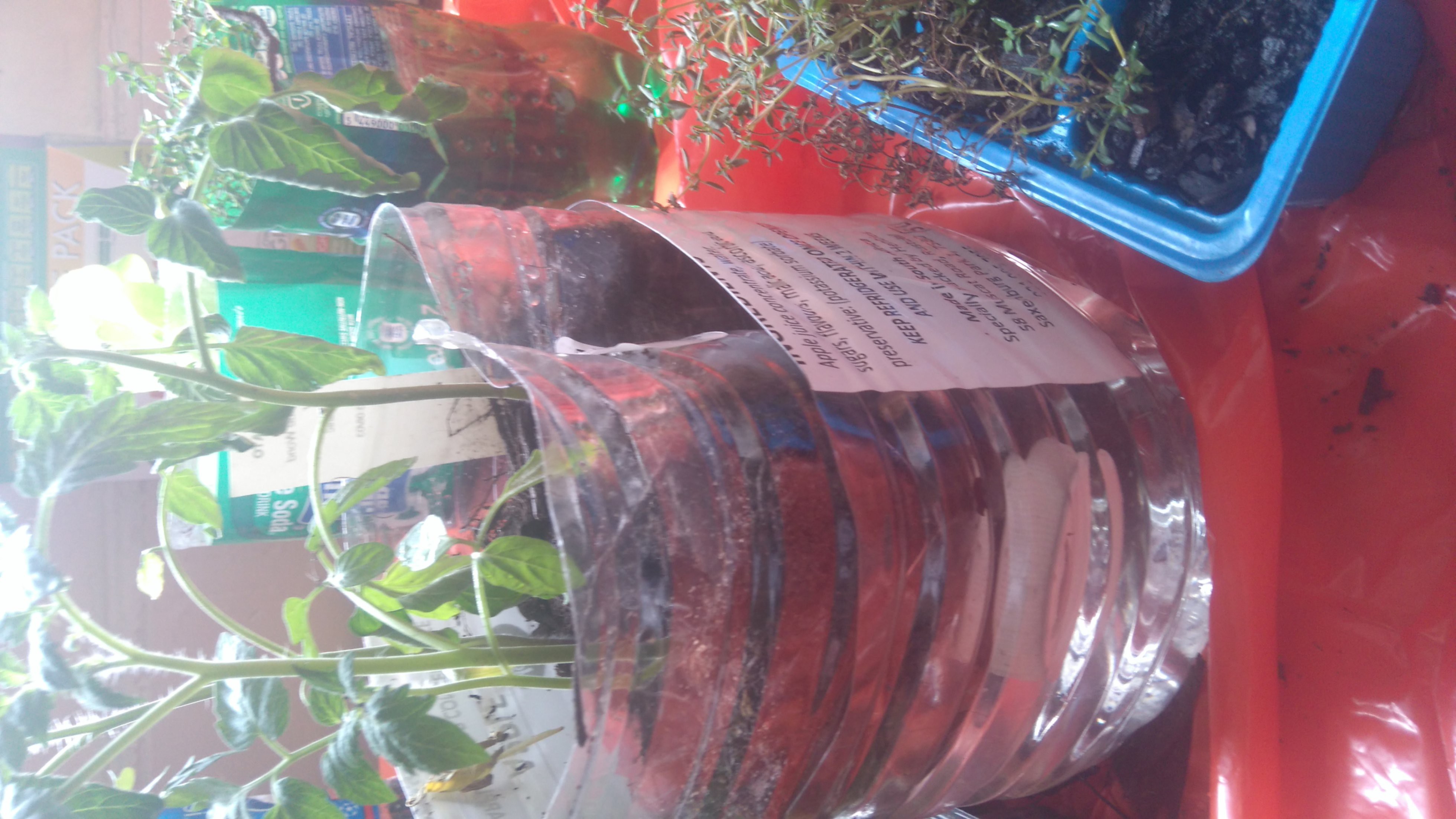-
Instructional on how to make a water-wise strawberry container
04/29/2016 at 02:43 • 0 commentsA water-wise strawberry container.
STEP ONE Punch or drill drainage holes in the base of a 5 litre container
STEP TWO
Bore a 28 mm irrigation hole at the top and a 28 mm hole in the centre of the planting station.
Drill a starter hole (for a jig saw) on the edge of a 100 mm D circle around the planting station.
STEP THREE
Cut out the planting station and cut a "keyhole" into the disc.
STEP FOUR
Punch a 3 mm irrigation hole in the cap of a soda bottle. Punch it from the inside.
STEP FIVE
Cut off the base of the soda bottle, push the neck through the irrigation hole and screw on the cap from the inside.
STEP SIX
Add a layer of gravel to cover the drainage holes, add potting soil, pre-irrigate, plant the strawberry and slide in the moisture shield.
-
Sack Garden - Trying a different format for build instructions
04/28/2016 at 19:20 • 0 commentsSACK GARDEN.
The internal irrigation system.
3 x 2L bottles
The bottom bottle must have a wide neck and big cap
![]()
Step One.
Bore a 28 mm hole in the cap of the bottom bottle.
![]()
Step Two.
Bore a 28 mm hole in the base of the middle bottle.
![]()
Step Three.
Bore a 52 mm hole in the base of the top bottle.
![]()
Step Four.
Hack a hole in the cap of the middle bottle and screw that cap into the cap of the bottom bottle.
![]()
Step Five.
Attach three splints to each of the bottom and middle bottles. Bamboo works well.
Wire or tape them in place.
![]()
Step Six.
Fill the bottom and middle bottles with gravel or rocks and connect them by screwing on the cap.
Glue the top bottle into the middle bottle. I used silicone sealer.
![]()
Step Seven.
Measure the width of the sack and divide by pi. That will give you the diameter of the base plate.
![]()
Step Eight.
Cut out a base plate of the right diameter to give the sack a circular shape. I used an old piece of polystyrene. Wood will work.
![]()
Step Nine.Punch or drill 1.5 mm irrigation holes North, South, West and East at the three levels indicated.
![]()
Step Ten.
Position the irrigation tower centrally.
Fill with best potting soil.
Pre-irrigate.
Mark out planting stations.
![]()
Step Eleven.
Cut horizontal slits about 100 mm long at each planting station and plant your seedlings. I planted 21 plants in a double spiral.
![]()
-
Deployment in the real world
04/24/2016 at 18:48 • 0 commentsWhile the older boys have been playing around with ideas, the youngest has been part of a project teaching people around Zimbabwe to use some of the systems they've come up with. They are doing amazing work, and I have some pics (just in time for the first round deadline hopefully):
-
Hi dad :)
04/23/2016 at 18:03 • 0 commentsThis has become a family entry! Richard Whitaker (my father) has become very passionate about the idea of vertical vegetable gardening, and has been building things at a rapid rate. In this log I'll put photos of some of his contraptions.
1) A bottle spiral. This early design is going to be much improved in a later version.
![]()
2) Water poured over the gravel is wicked up by the plants. Good for leafy greens and lazy gardeners!
![]()
3) Who says tomatoes need to grow out of the top!
![]()
![]()
4) A bottle rack. Each bottle can click in and out independently. One of the nicest systems so far, and these milk bottles are a very common type of trash.
![]()
5) A pretty herb garden
![]()
6) Hanging tower of bottles - water in the top trickles down and waters all the plants.
![]()
7) A sports themed salad bar (bottles from unclaimed lost property)
![]()
8) Can tomatoes be grown in less than 2 kg of soil
![]()
9) How many tomatoes can be grown in 10 kg of soil?
![]()
10) A strawberry pot with a moisture retention system.
![]()
It's crazy how quickly all this was thrown together, literally out of trash. Way to go team Whitaker! Can't wait for @David Whitaker to add in what he's been up to :)
-
Seedling holder from recycled bottles
04/14/2016 at 14:34 • 0 commentsMy university have a little contest to see which residence can decorate their reception area using juice bottles. I made a little quiz game (https://hackaday.io/project/11033-environmental-quiz-game), and some random other stuff, but I thought some greenery might be nice. Behold:
The string it hangs from is also made from bottles. I don't know how applicable this is to the real world but scaled up it could be cool for hanging from a fence... -
They're alive!
03/31/2016 at 11:50 • 0 commentsWell, 5 days later, everything is alive and well. Even the controls - although they looked significantly less happy then the ones I'd transplanted. It looks like it's working so far, so I think I'll leave the experiment running a while longer. The level of the water in the bottles had dropped about a cm so far, which means it should be possible for them to survive for quite some time. Here's a pic:
![]()
-
Testing a wick method for self-watering pots (from soda bottles)
03/25/2016 at 09:09 • 1 commentI'm going away for 5 days, which means I can't water the seedlings I've had on my windowsill any more. I could ask a friend, but that's not how we nerds do things :)
I'm testing a system that already works for one of my pot plants - the plant is in the top of a bottle, suspended upside down in the base of the bottle. The outer layer is filled with water, which is drawn up by the plant as needed. The idea is to fill up the water once a week as opposed to watering daily.
This is all rushed (I leave in a few hours), but here are the pics of my set-up. I left some plants in the planters as controls. Sadly, I doubt they'll make it - but their sacrifice is for science! Hopefully I don't come back to a whole bunch of dead plants...
![]()
![]()
![]()
![]()
I'll put more info when I get back. Anyone who feels like trying this, all you need is a bottle, a box cutter and a plant! Cut holes near the lid of the bottle, chop it in half, partly fill the bottom half with water and the top half with plant and soil, insert one into the other and add water when you feel like it.
Urban gardening on the cheap
Using recycled materials to grow food effectively, and at very low cost.
 johnowhitaker
johnowhitaker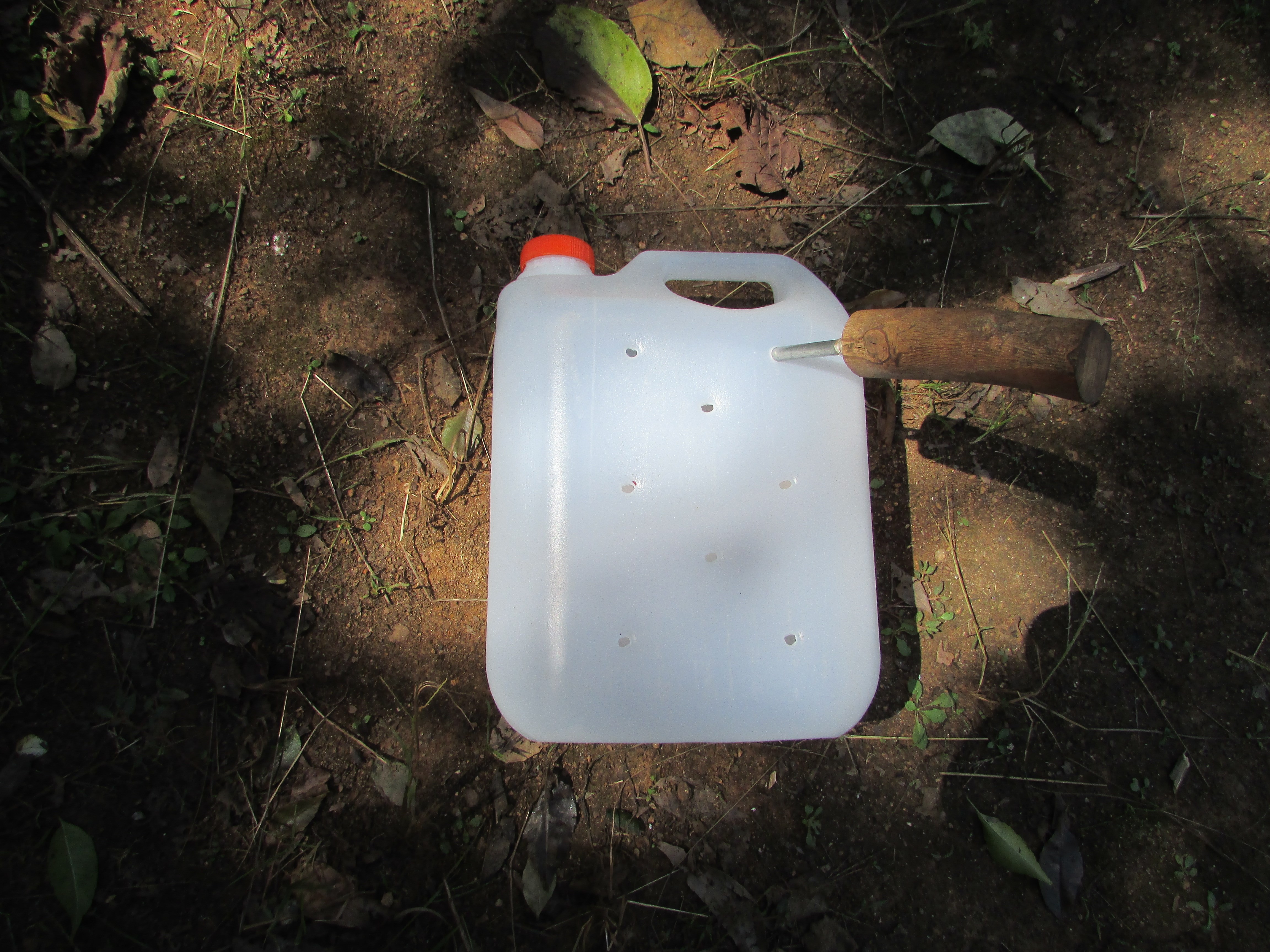
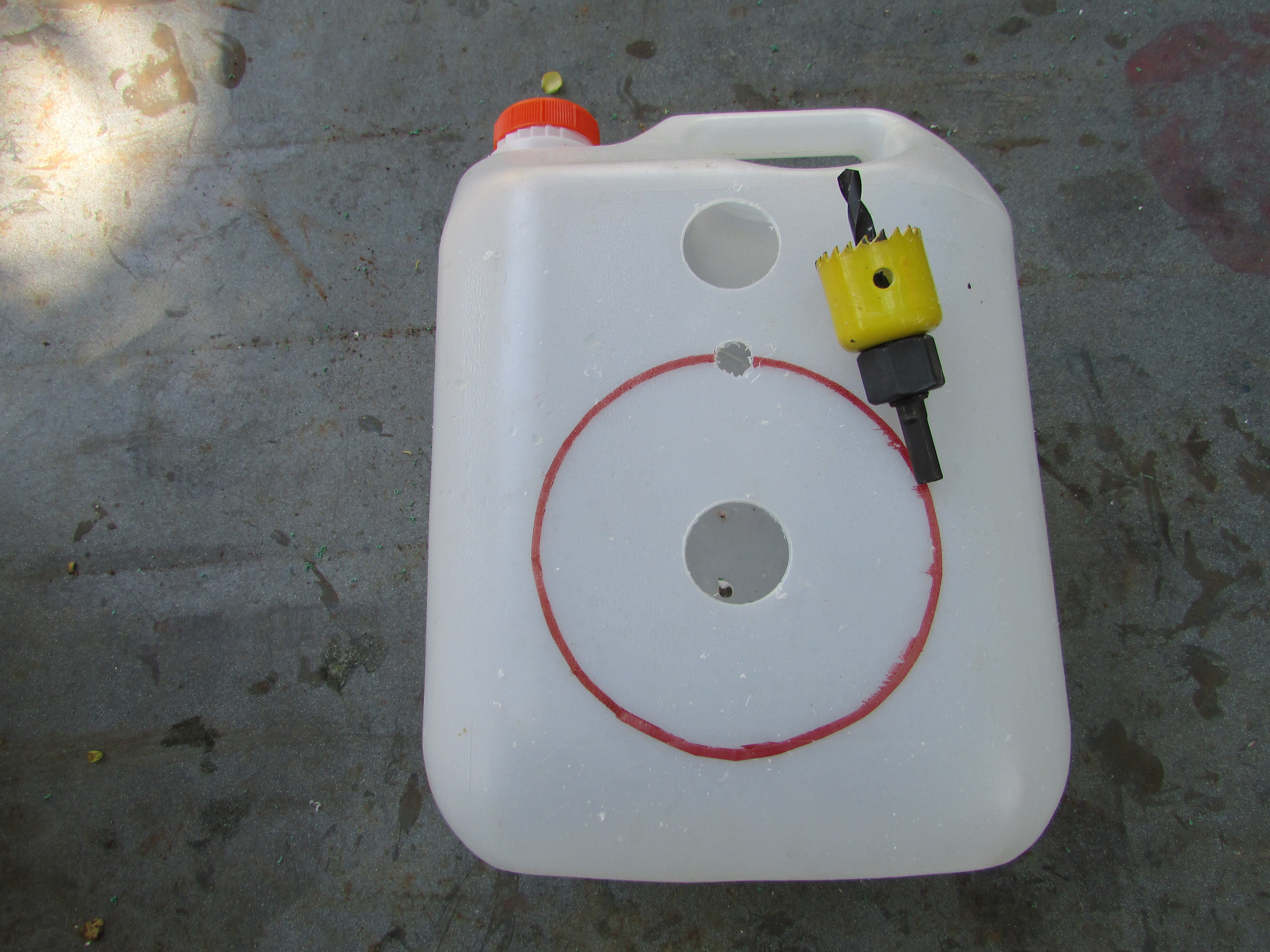 STEP THREE
STEP THREE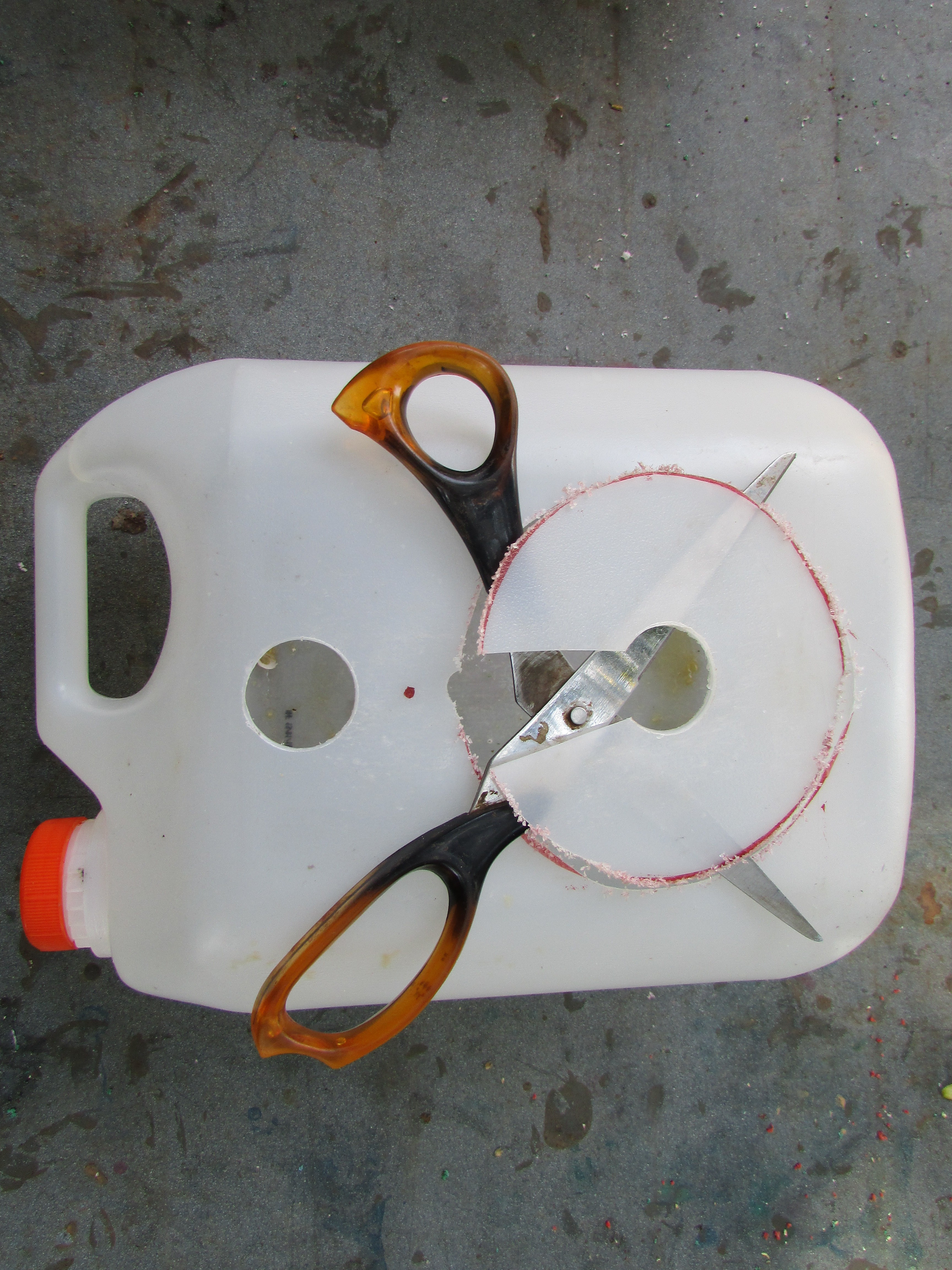
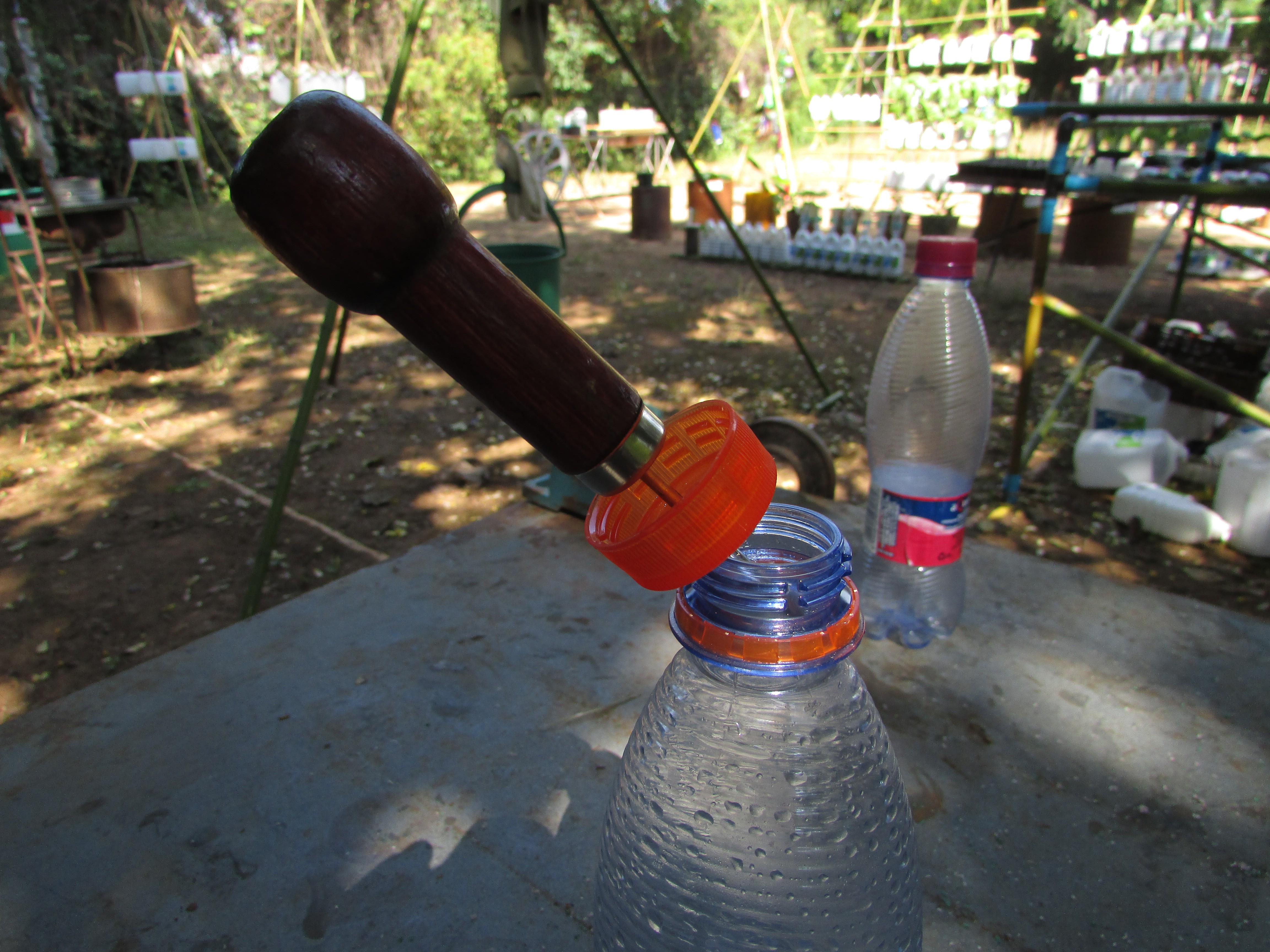 STEP FIVE
STEP FIVE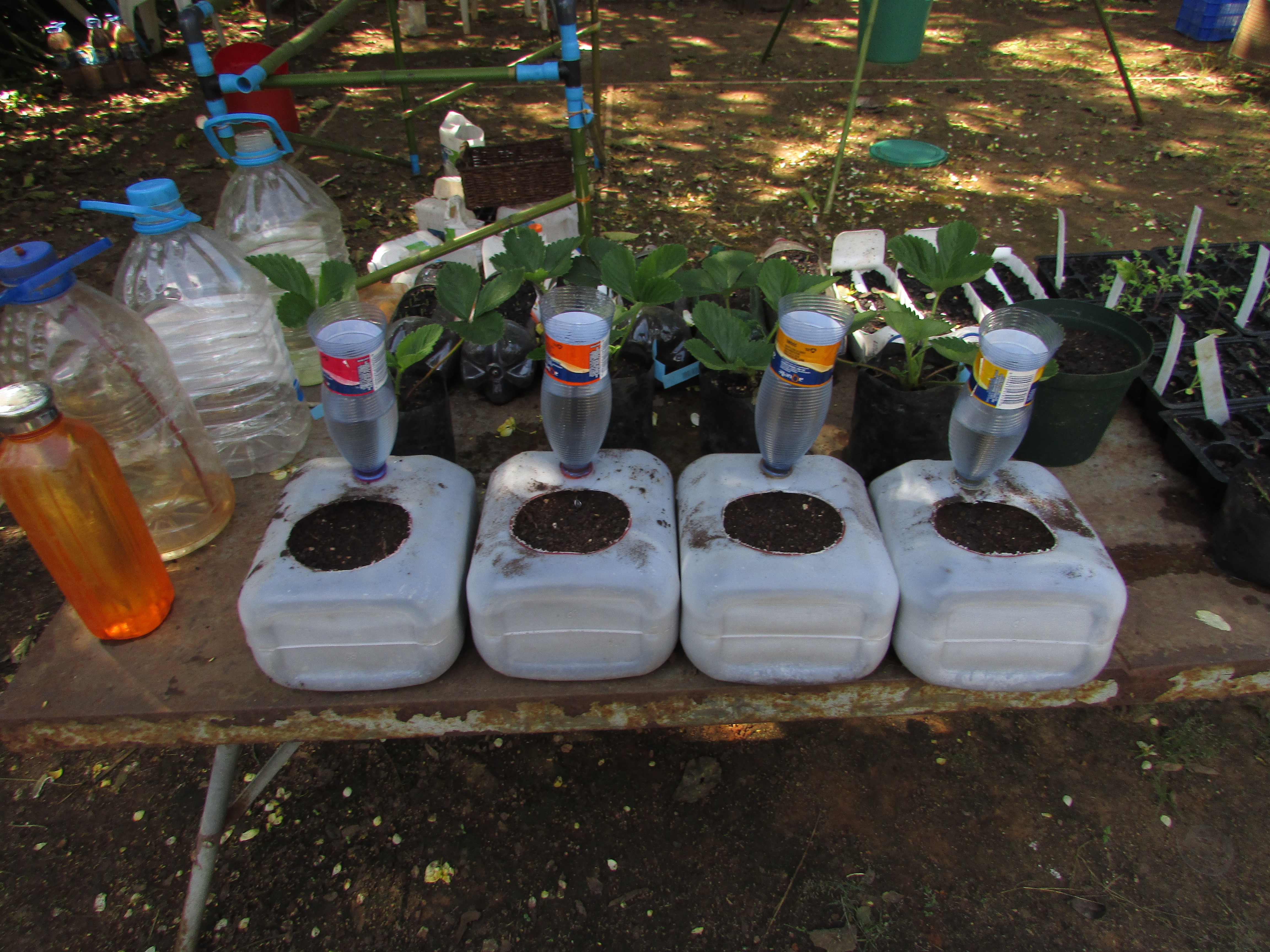 STEP SIX
STEP SIX